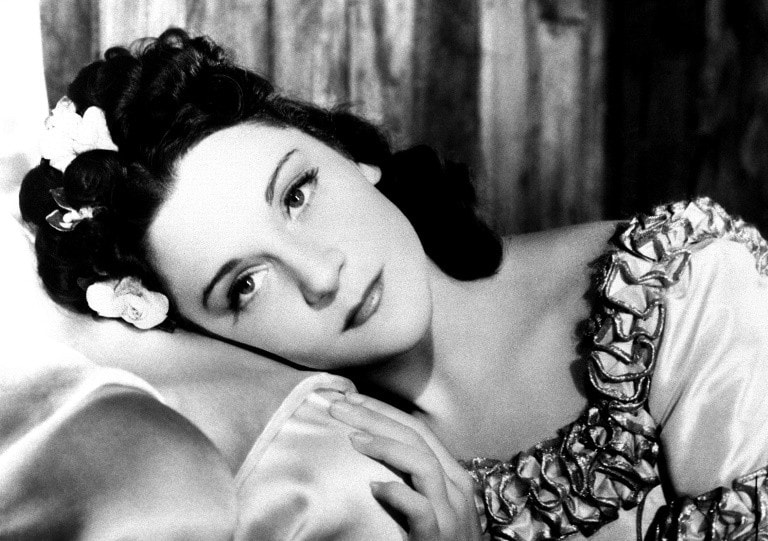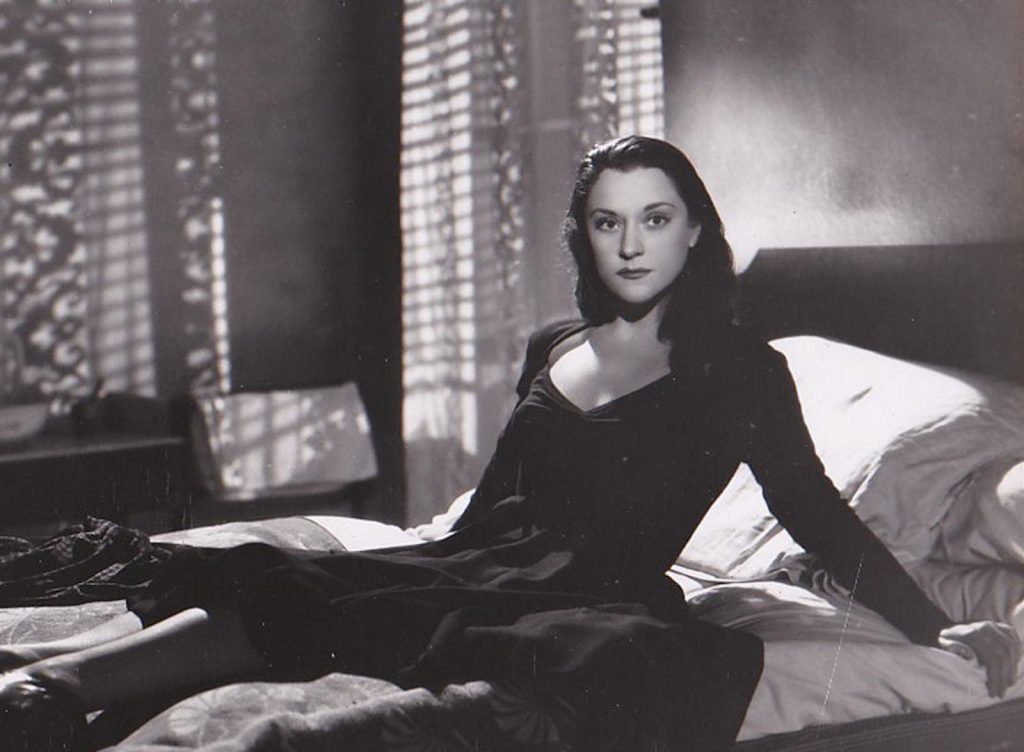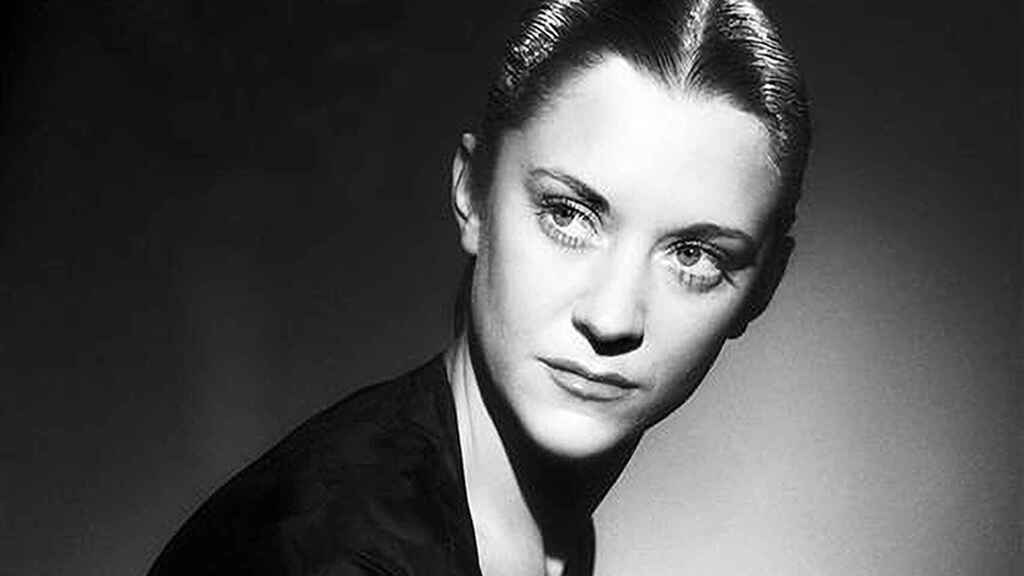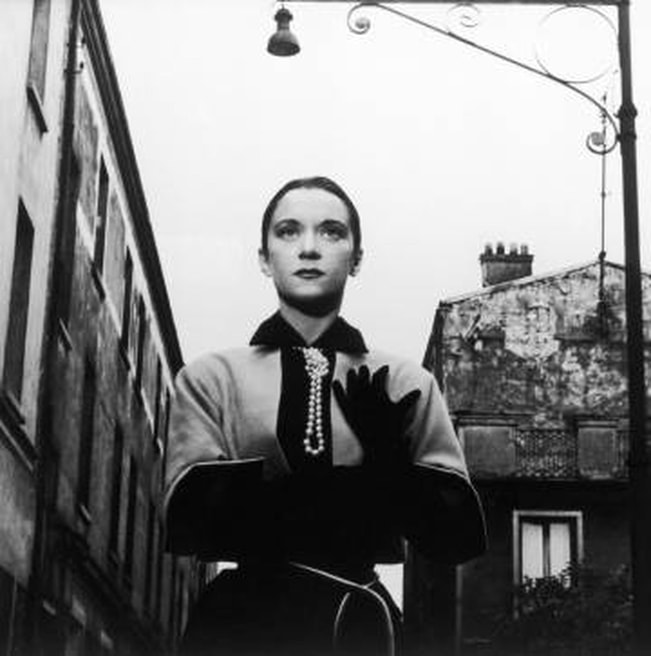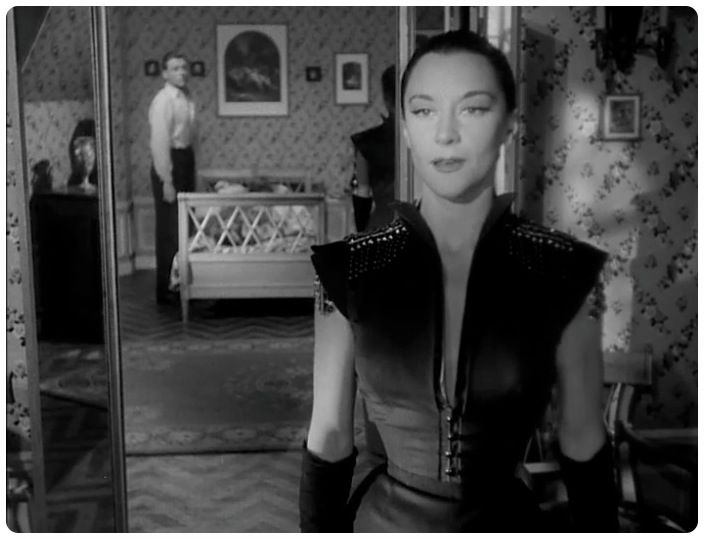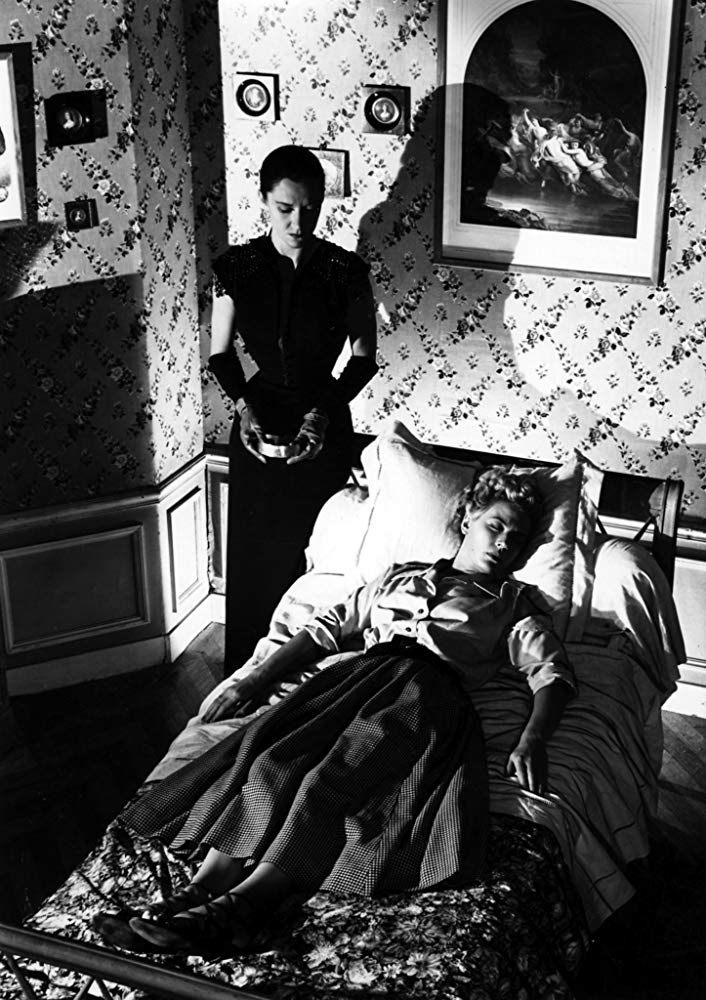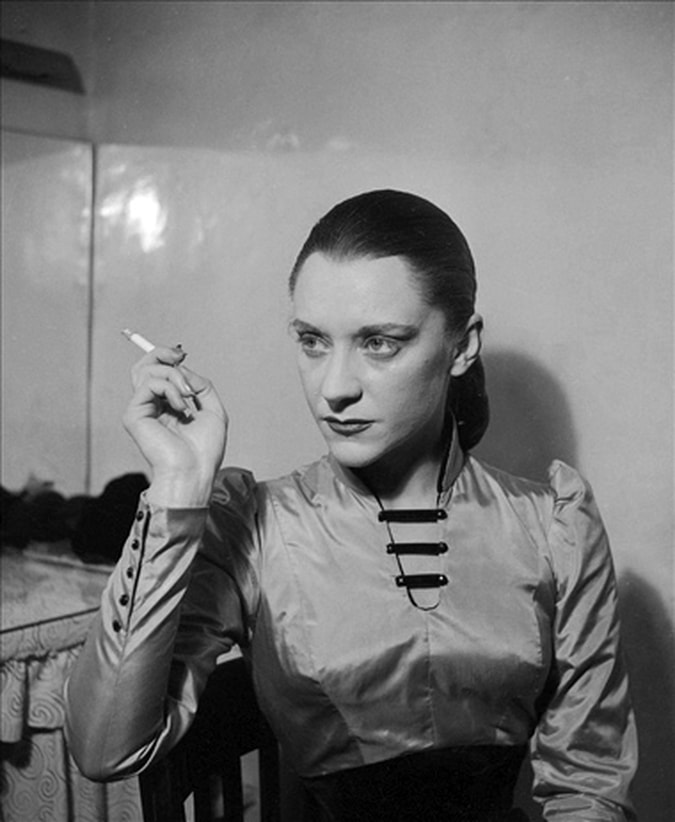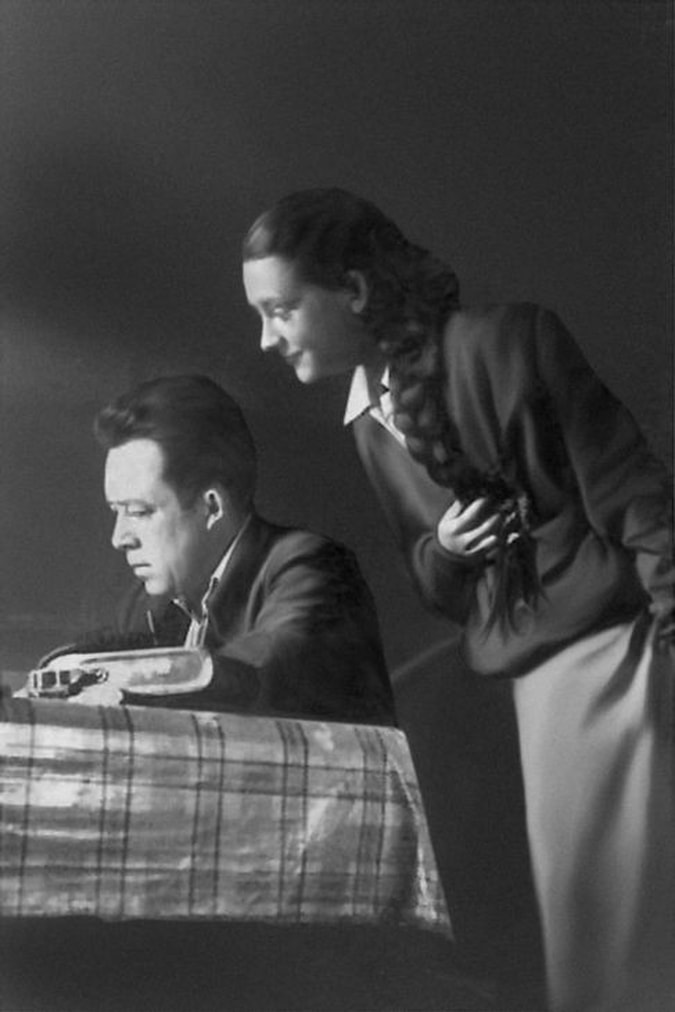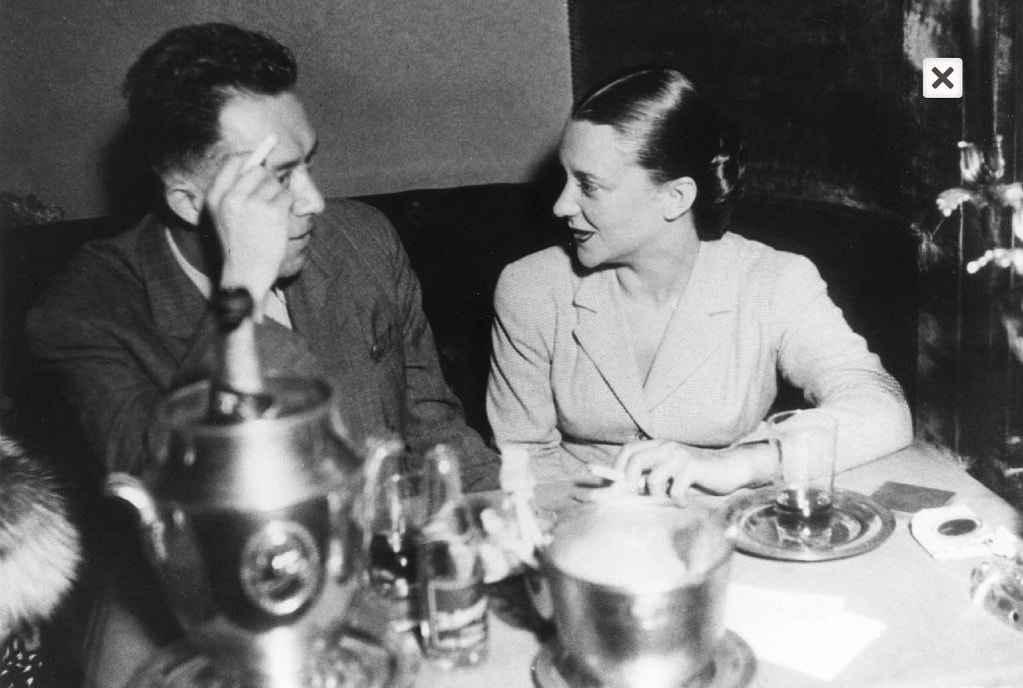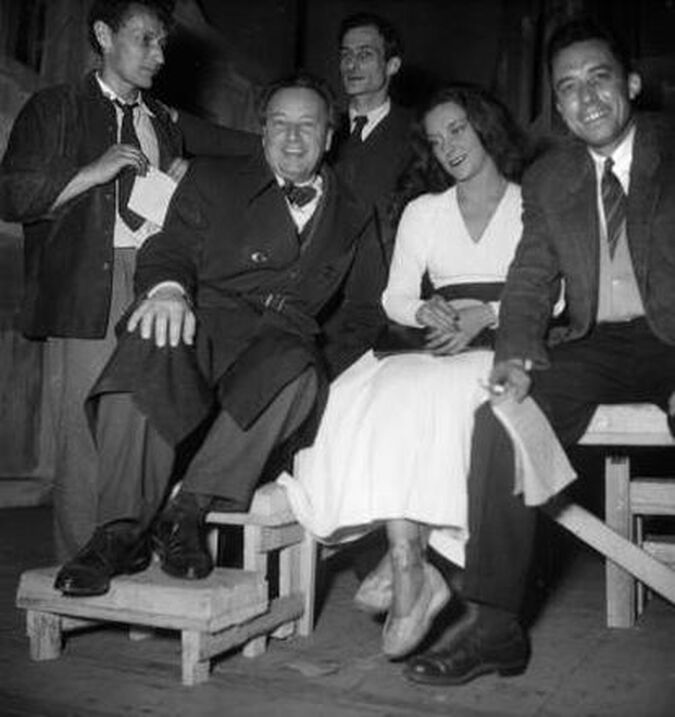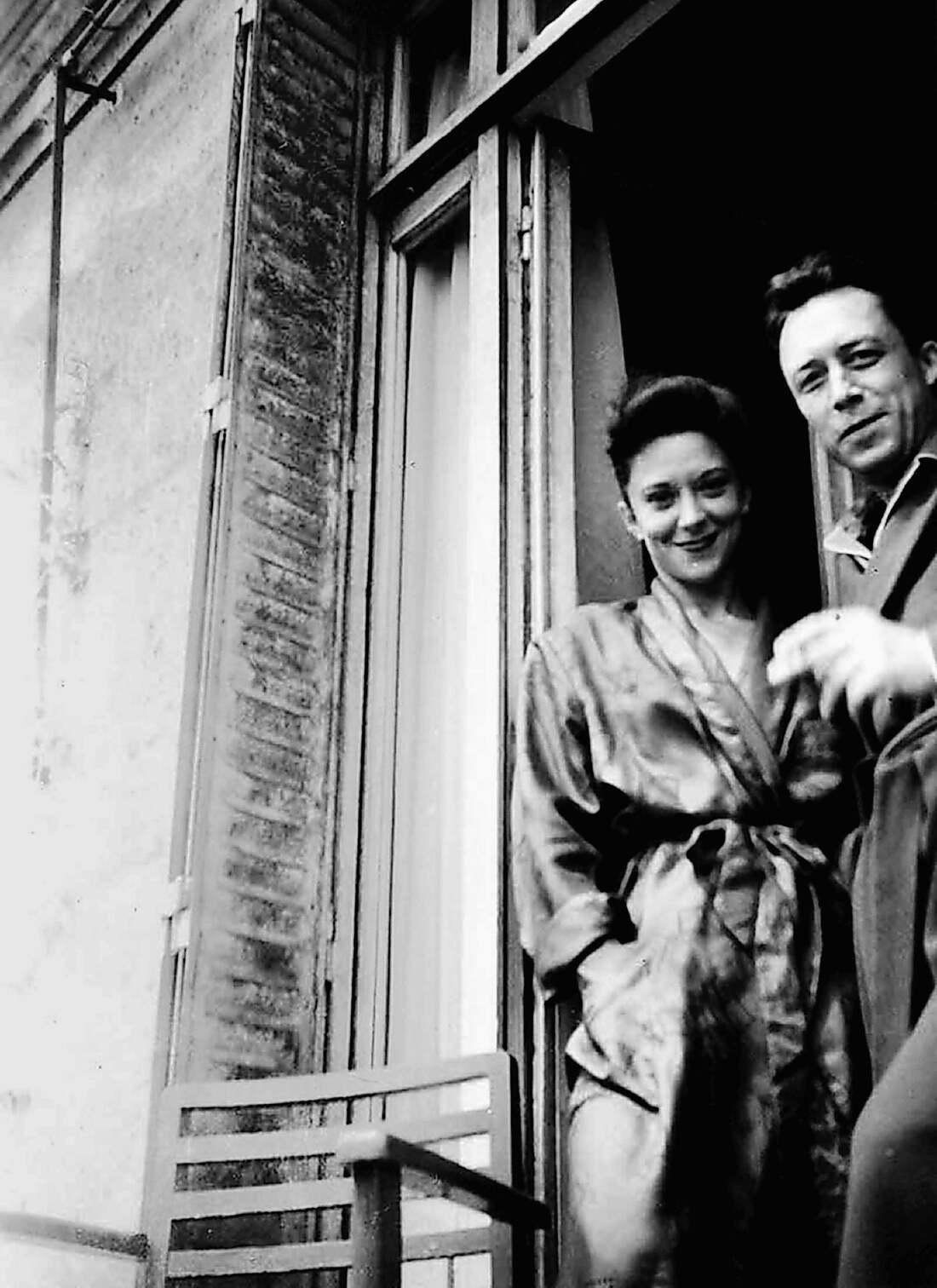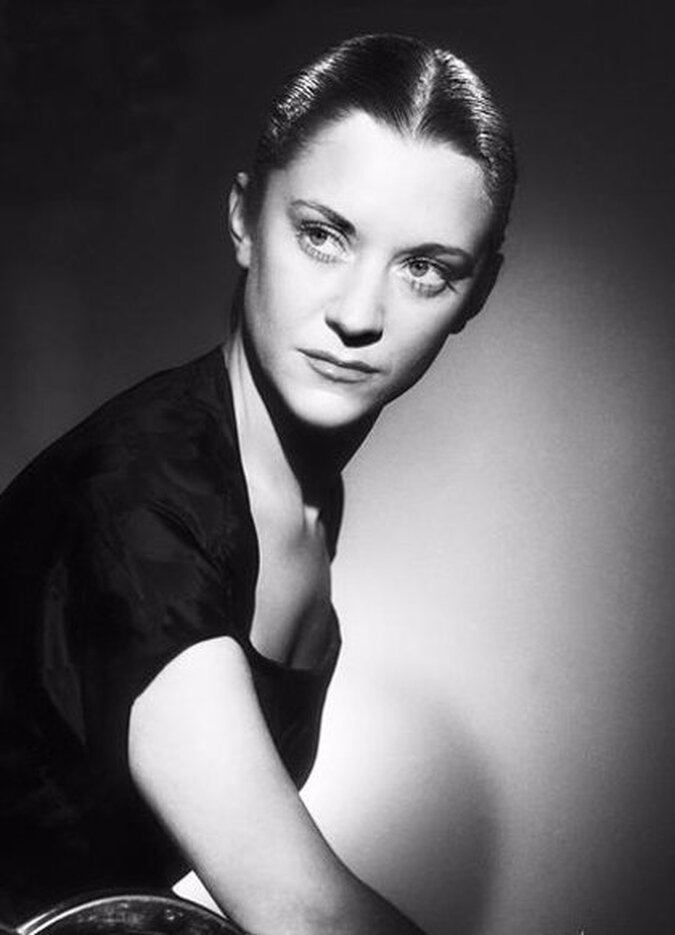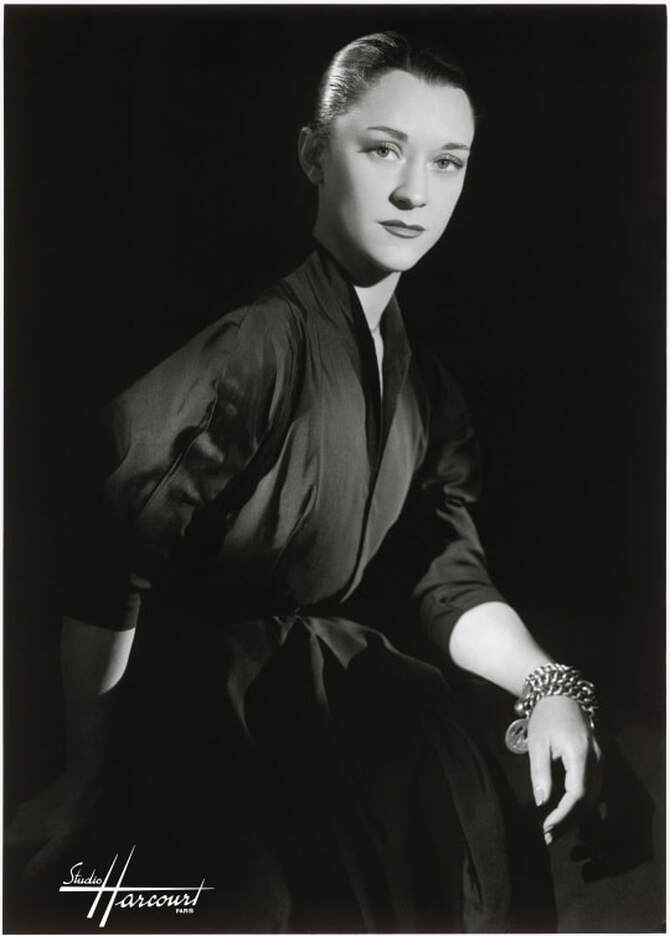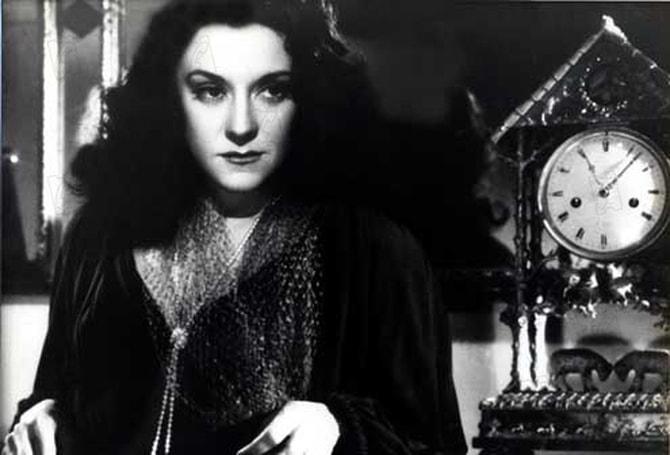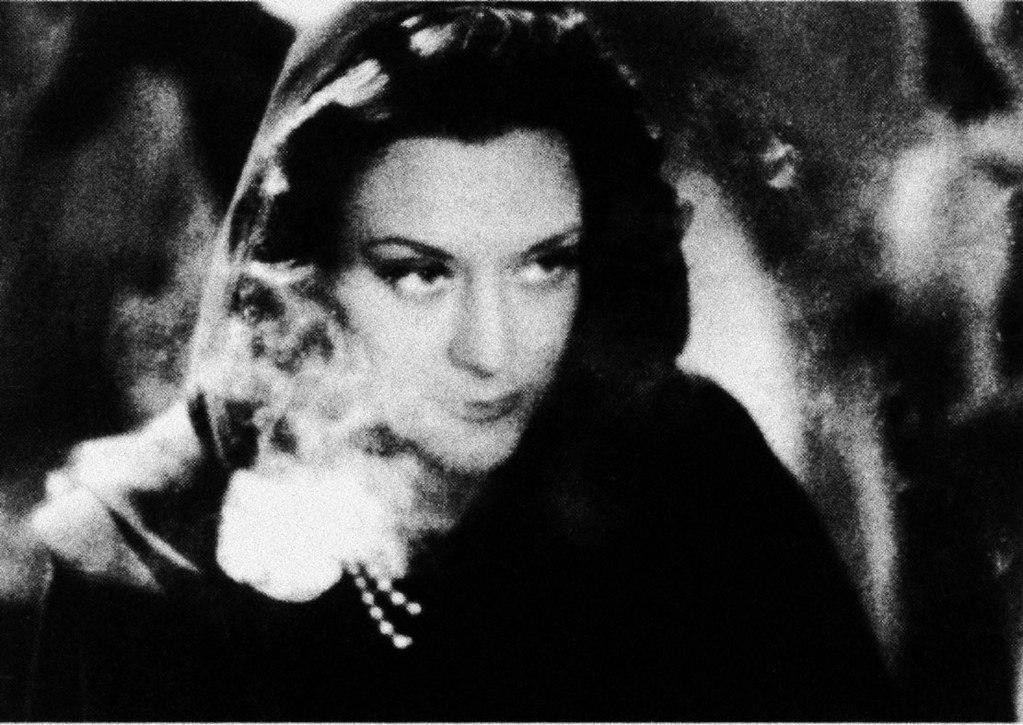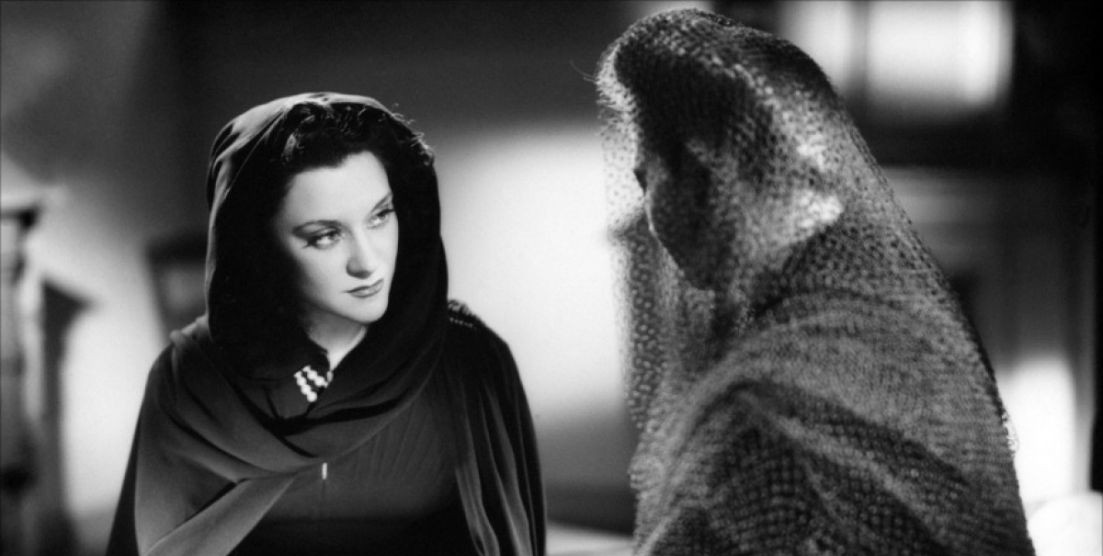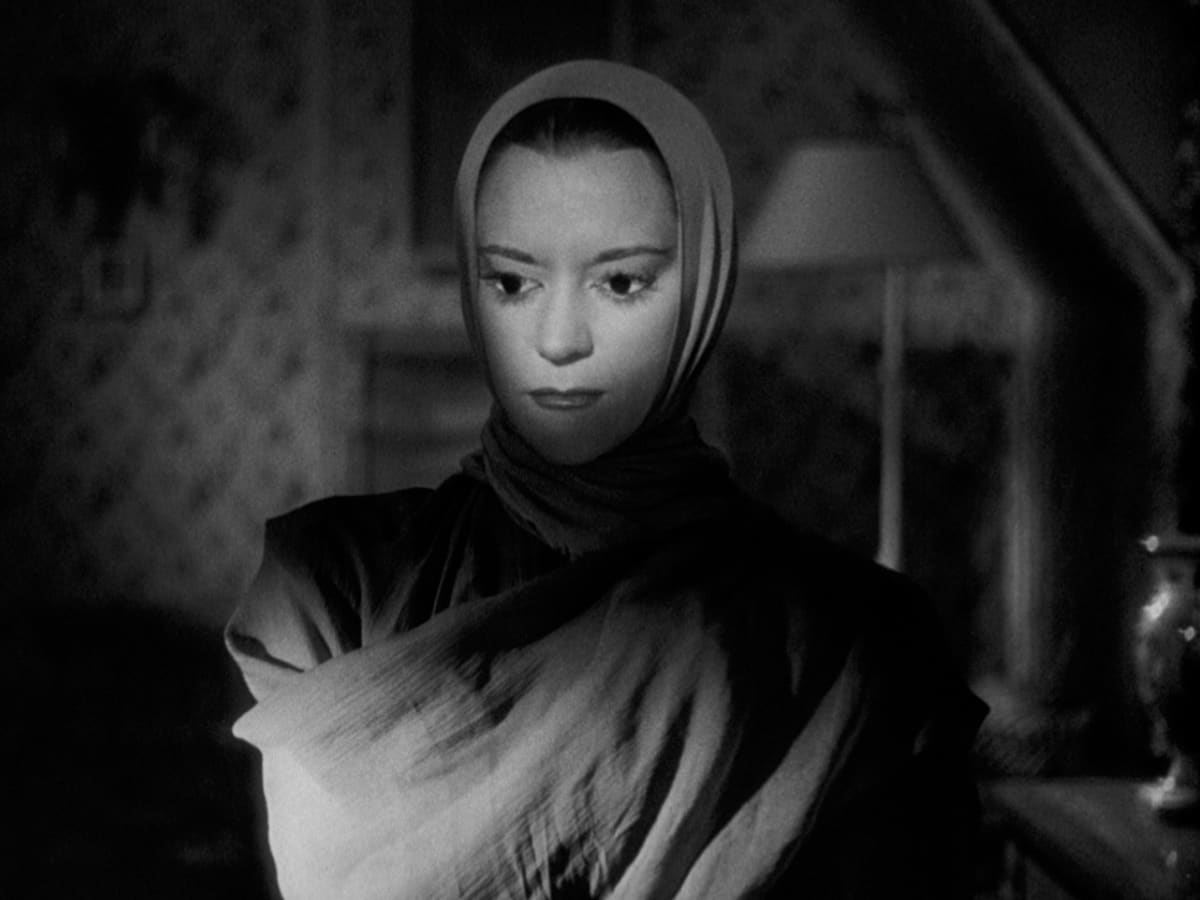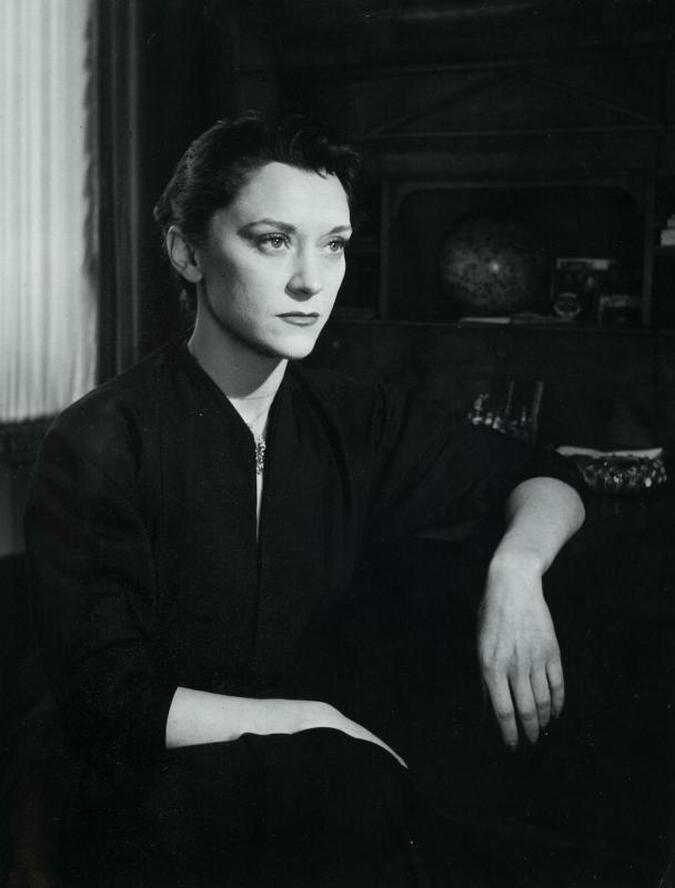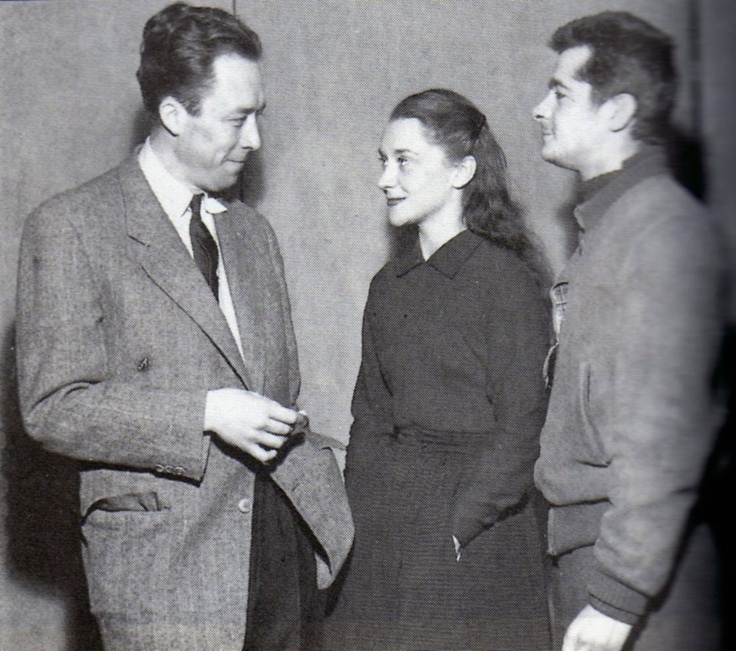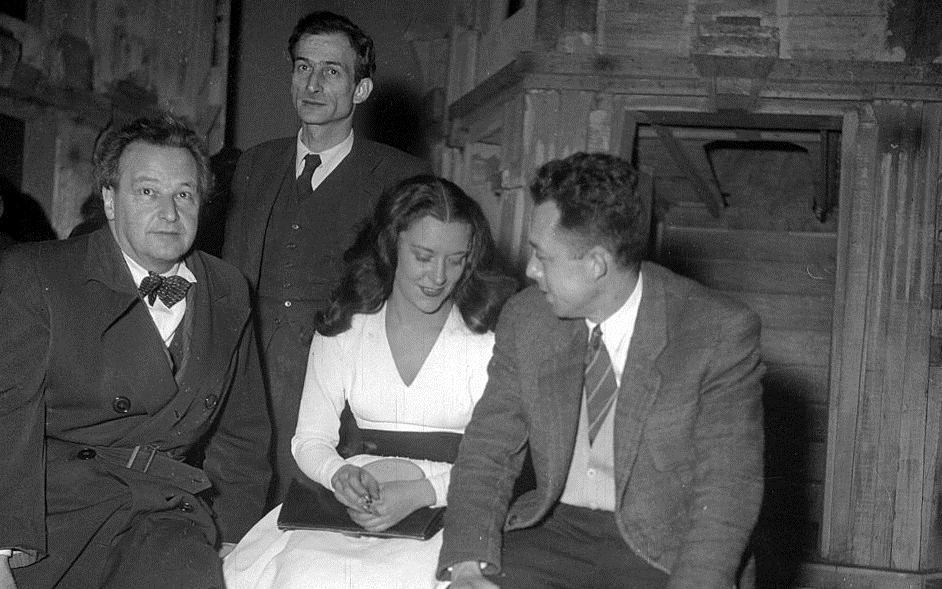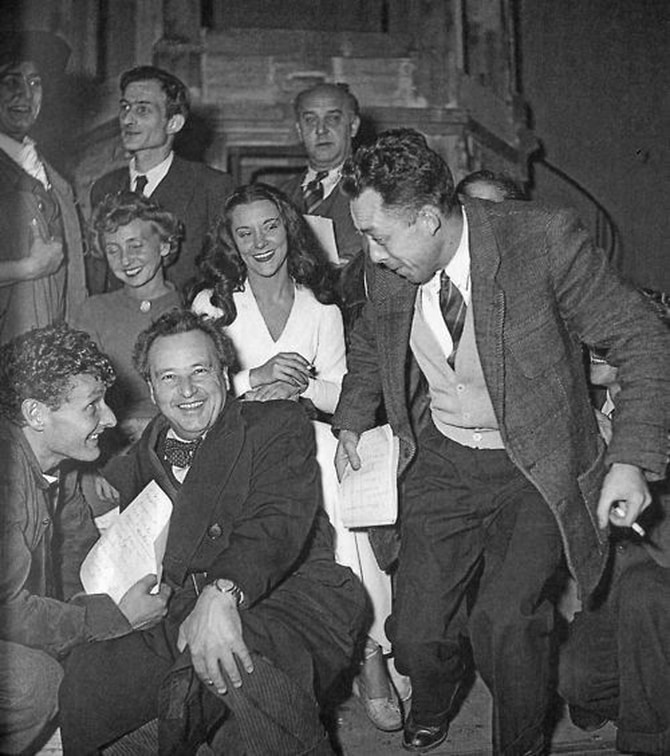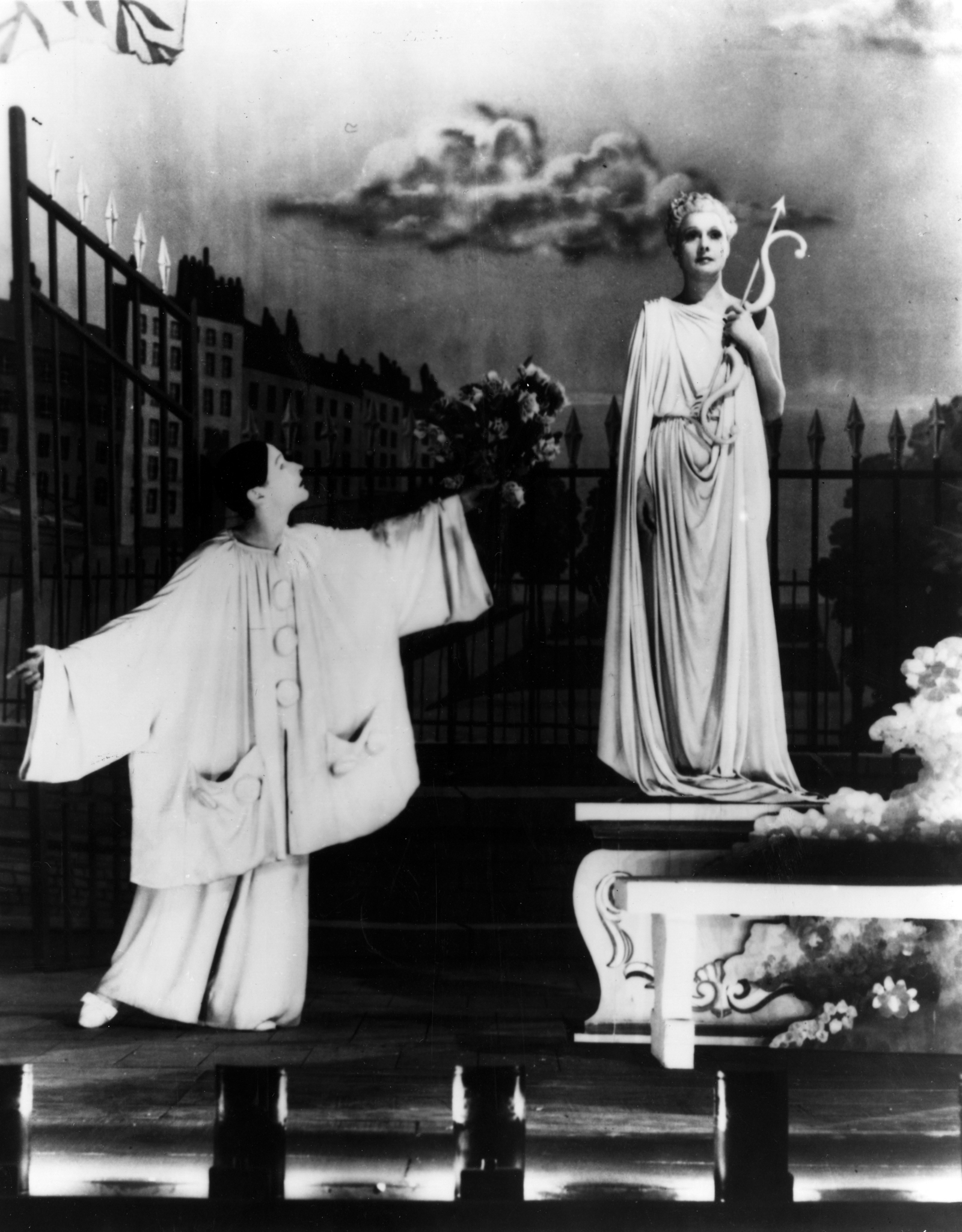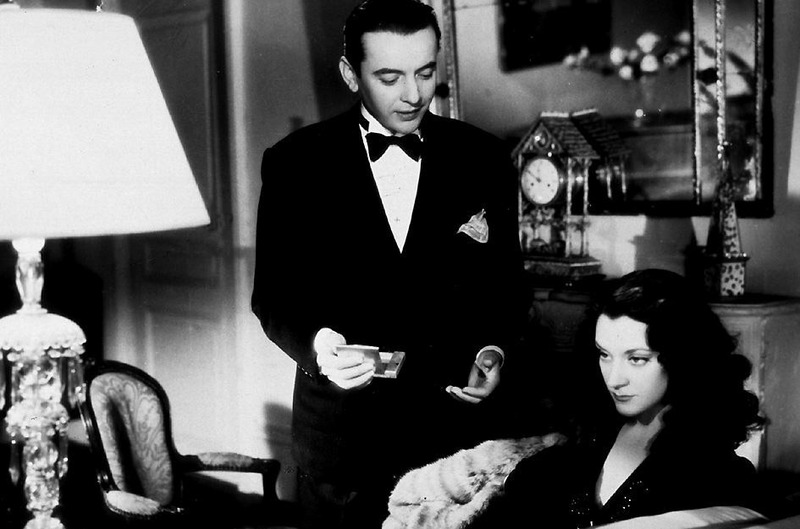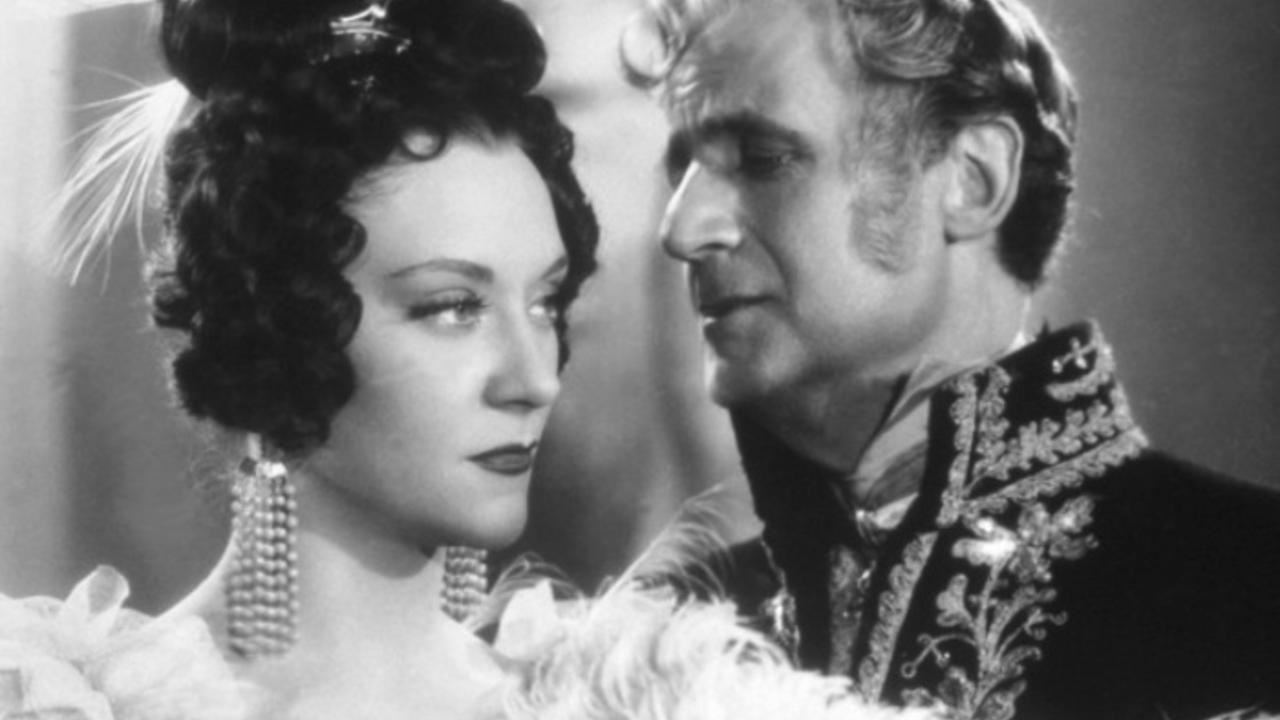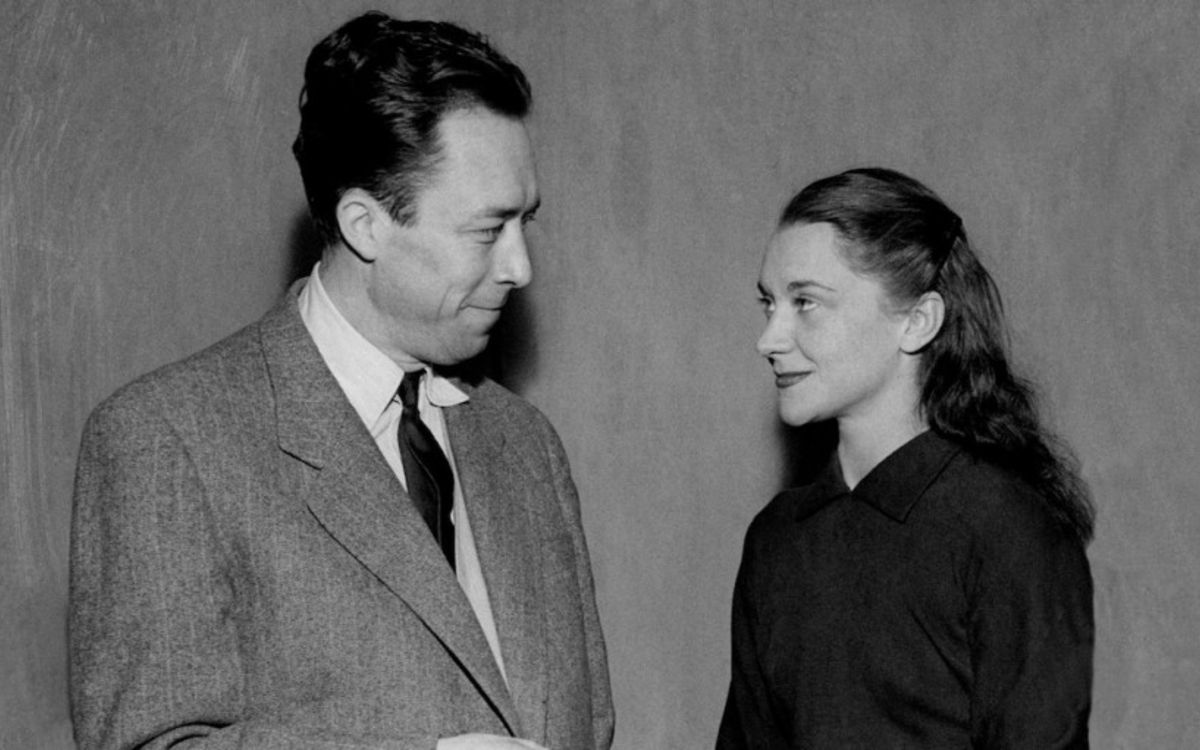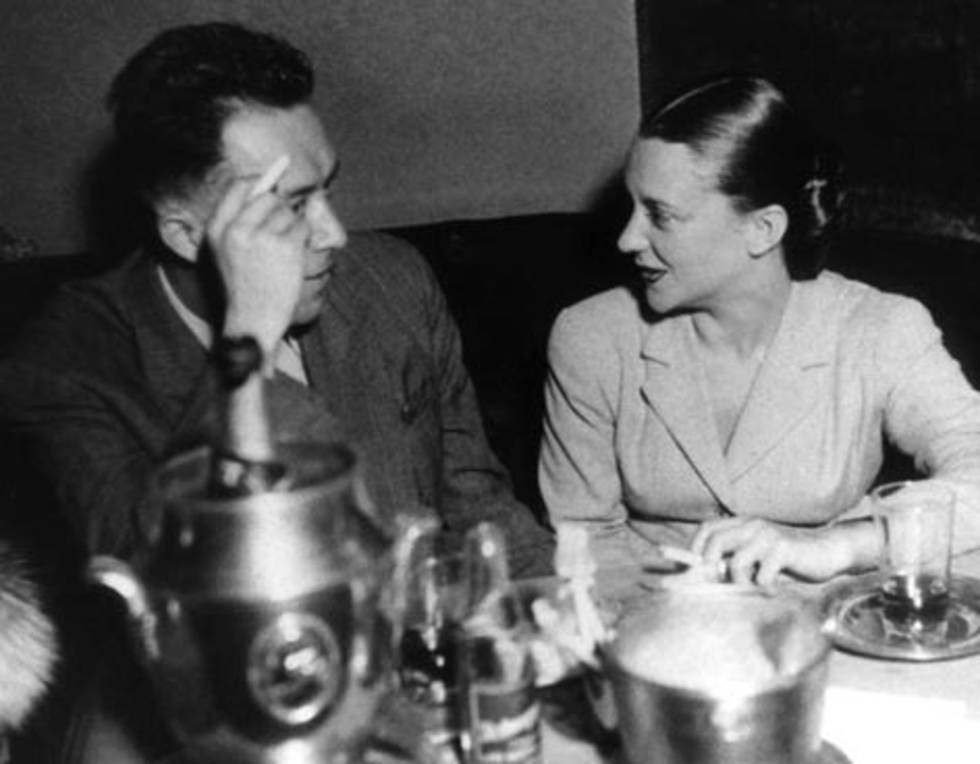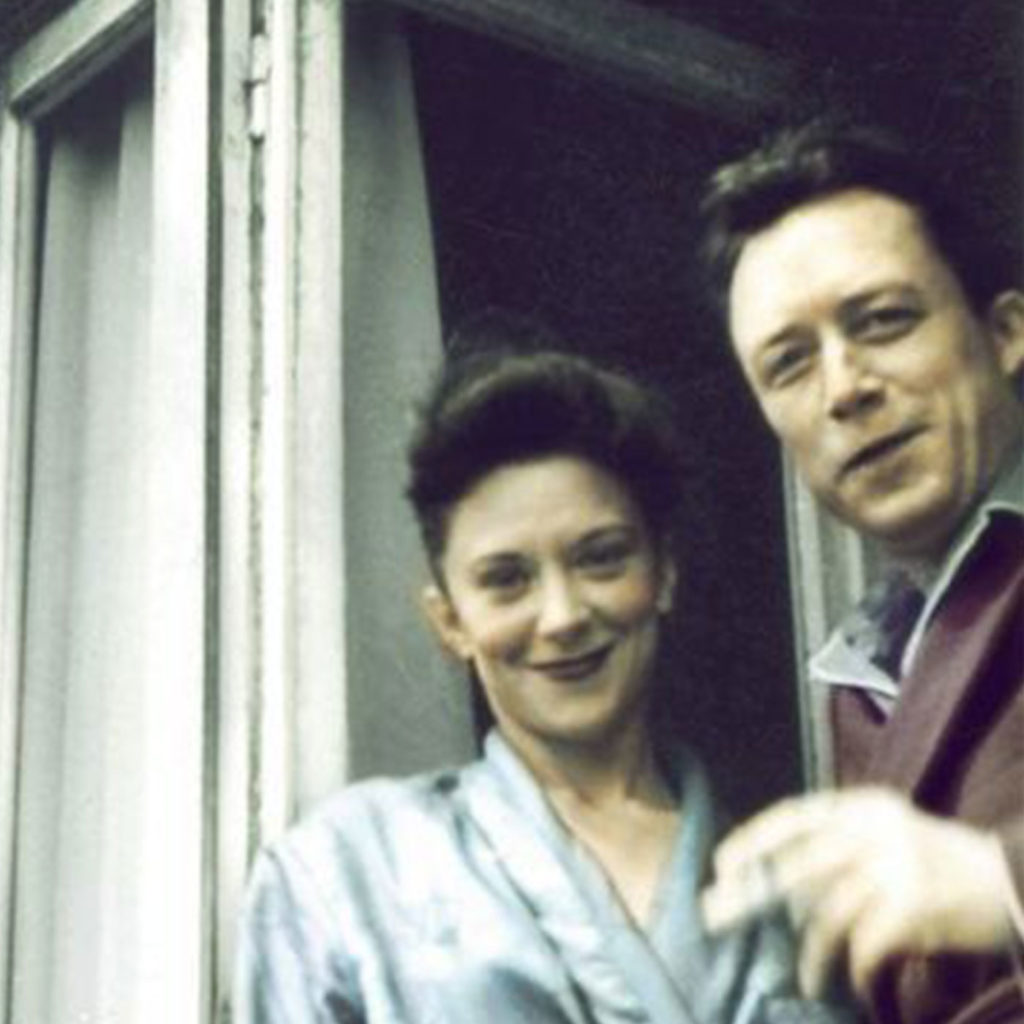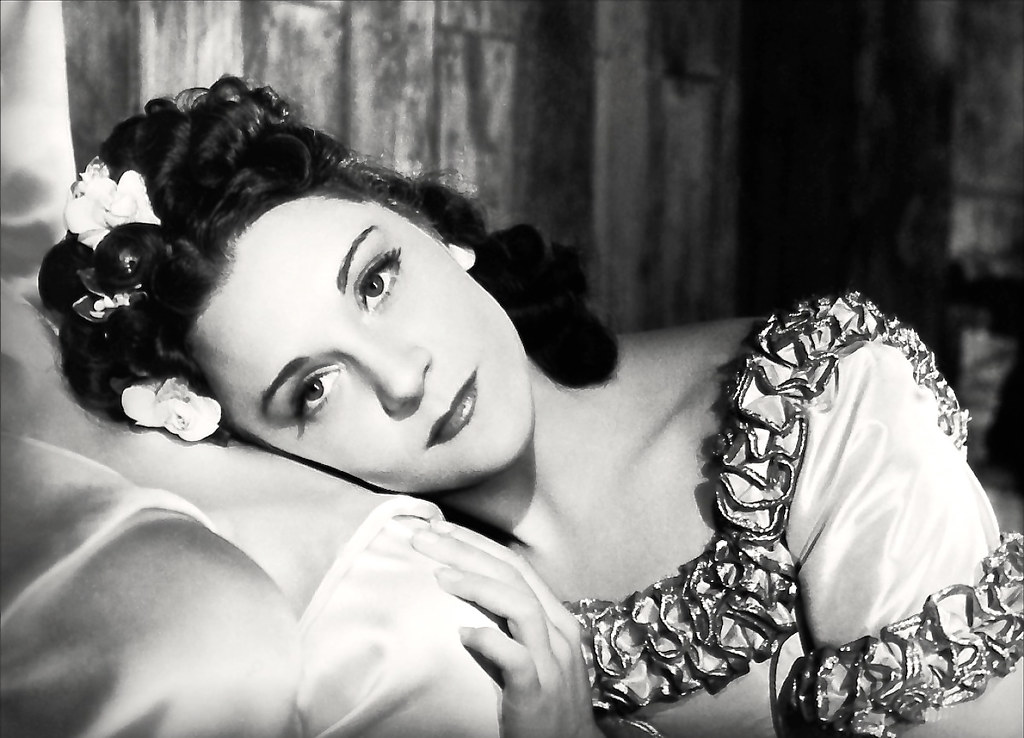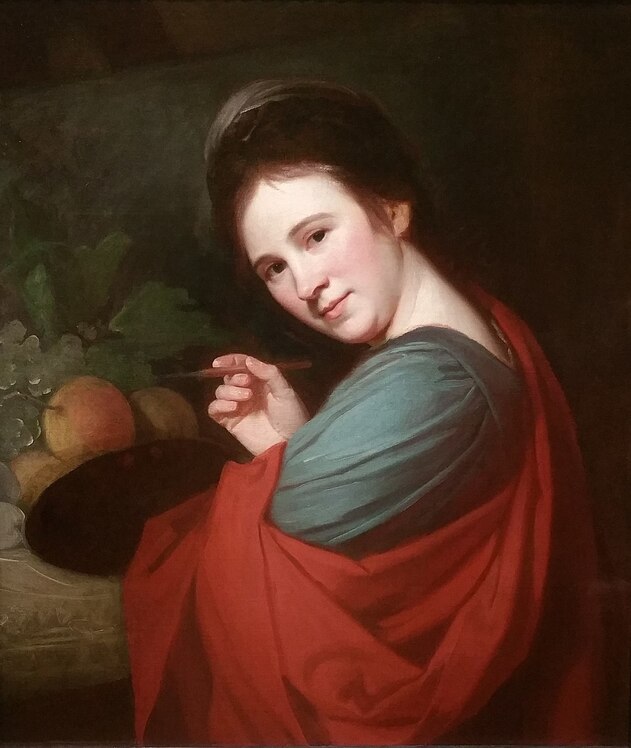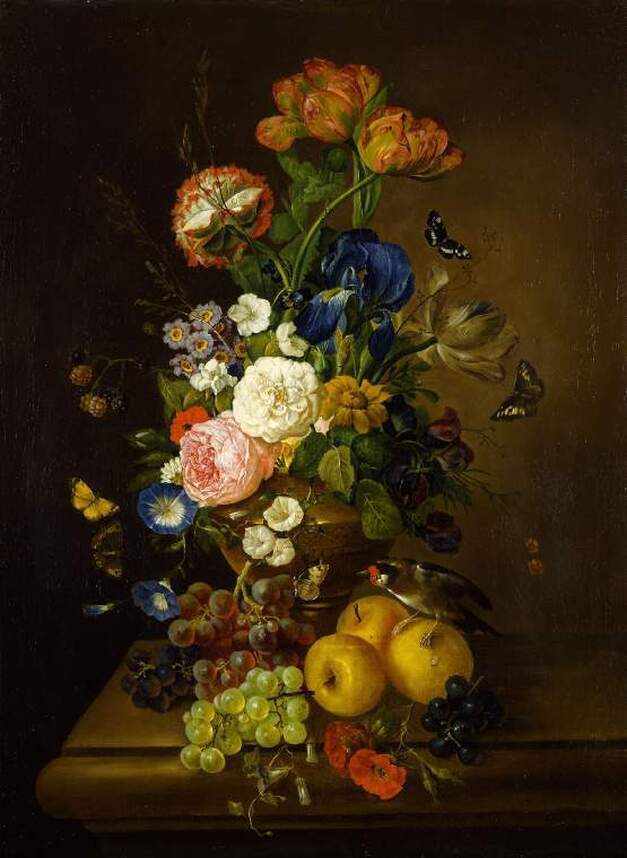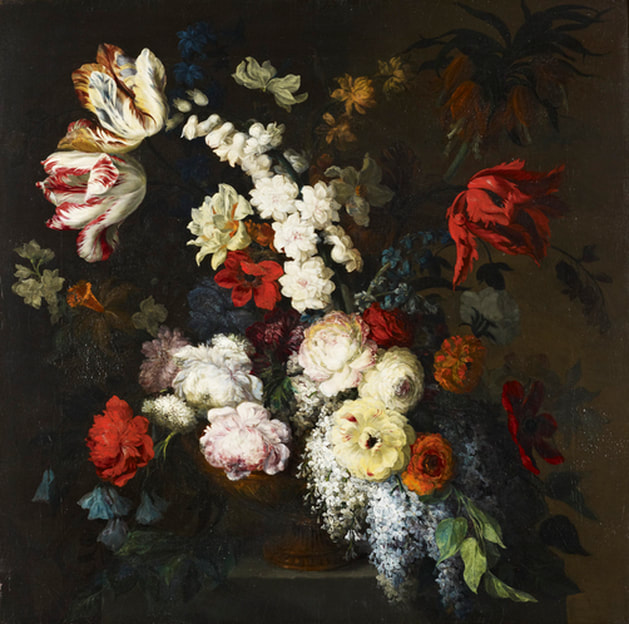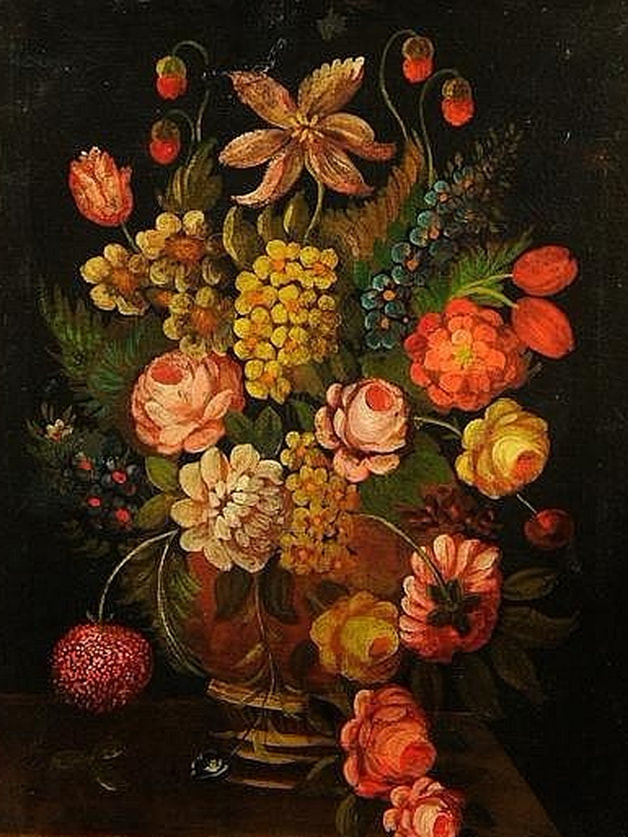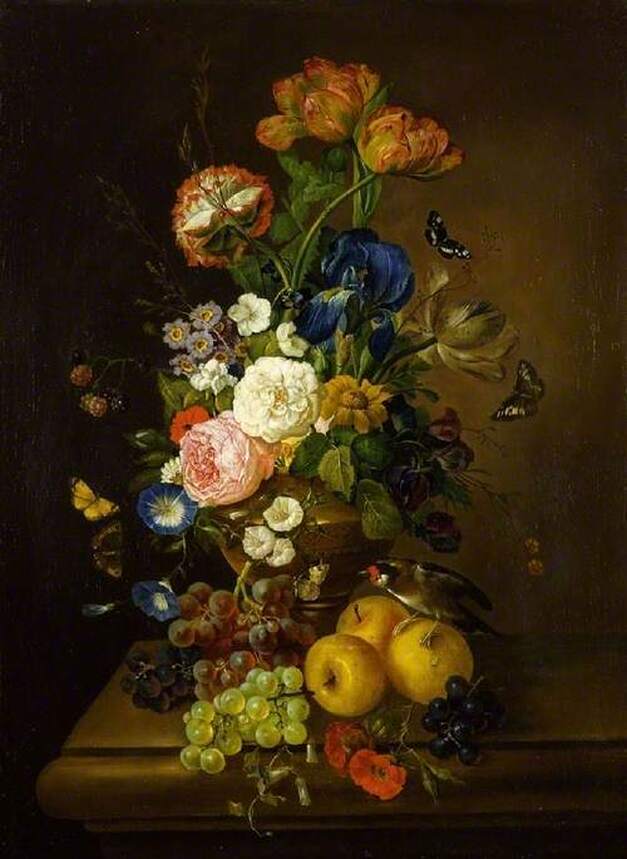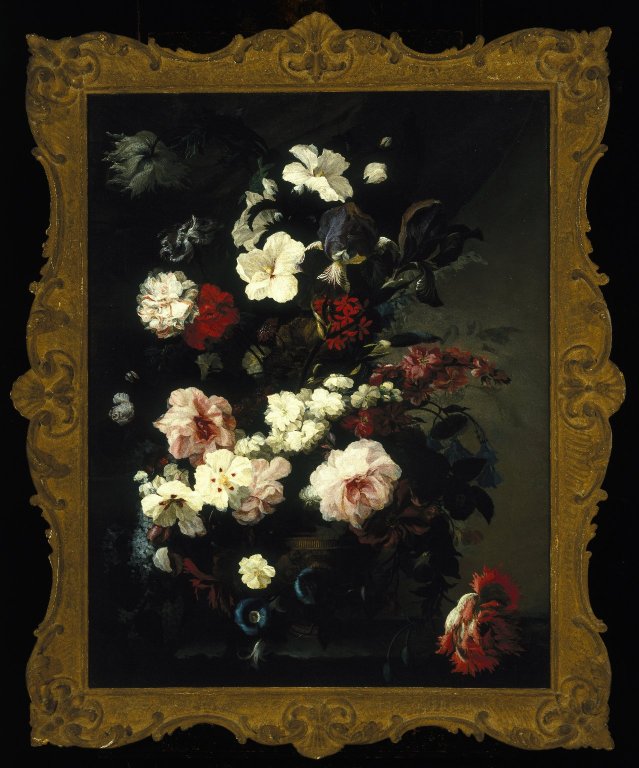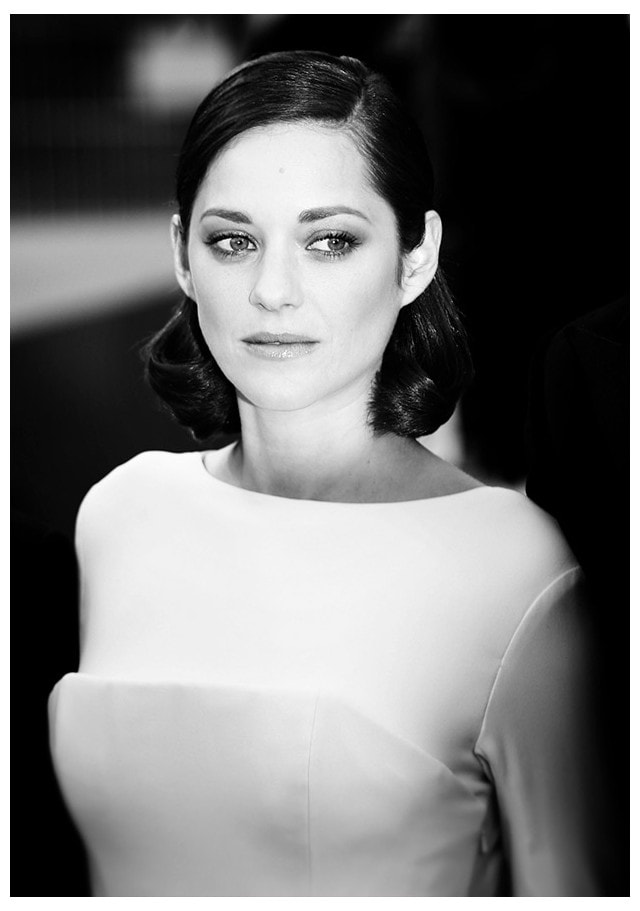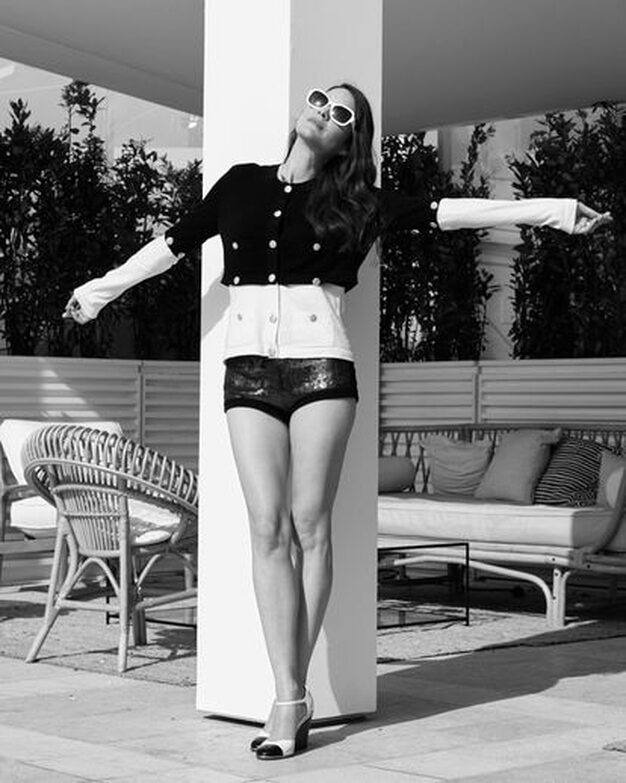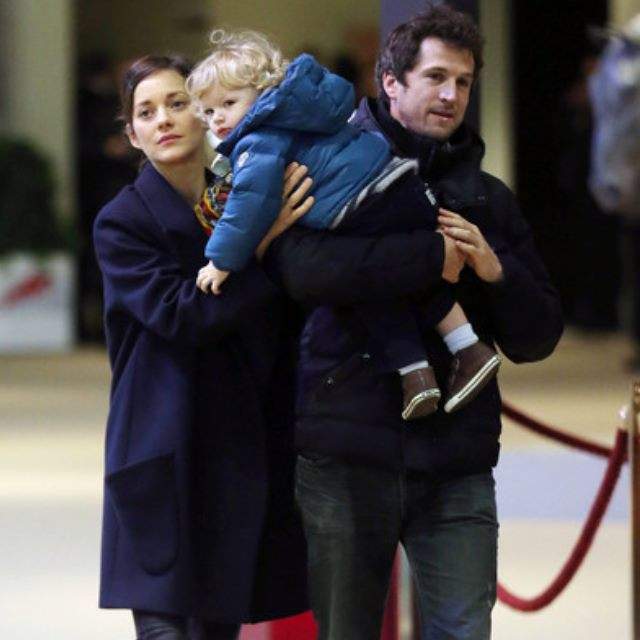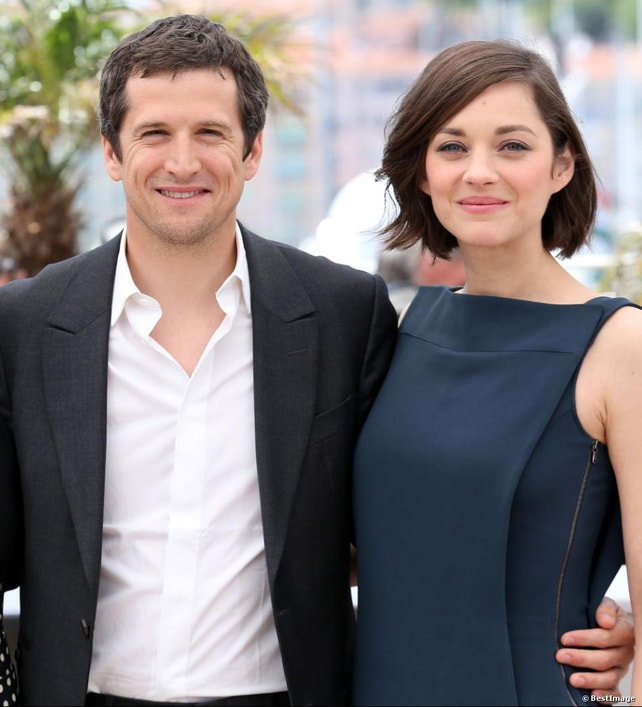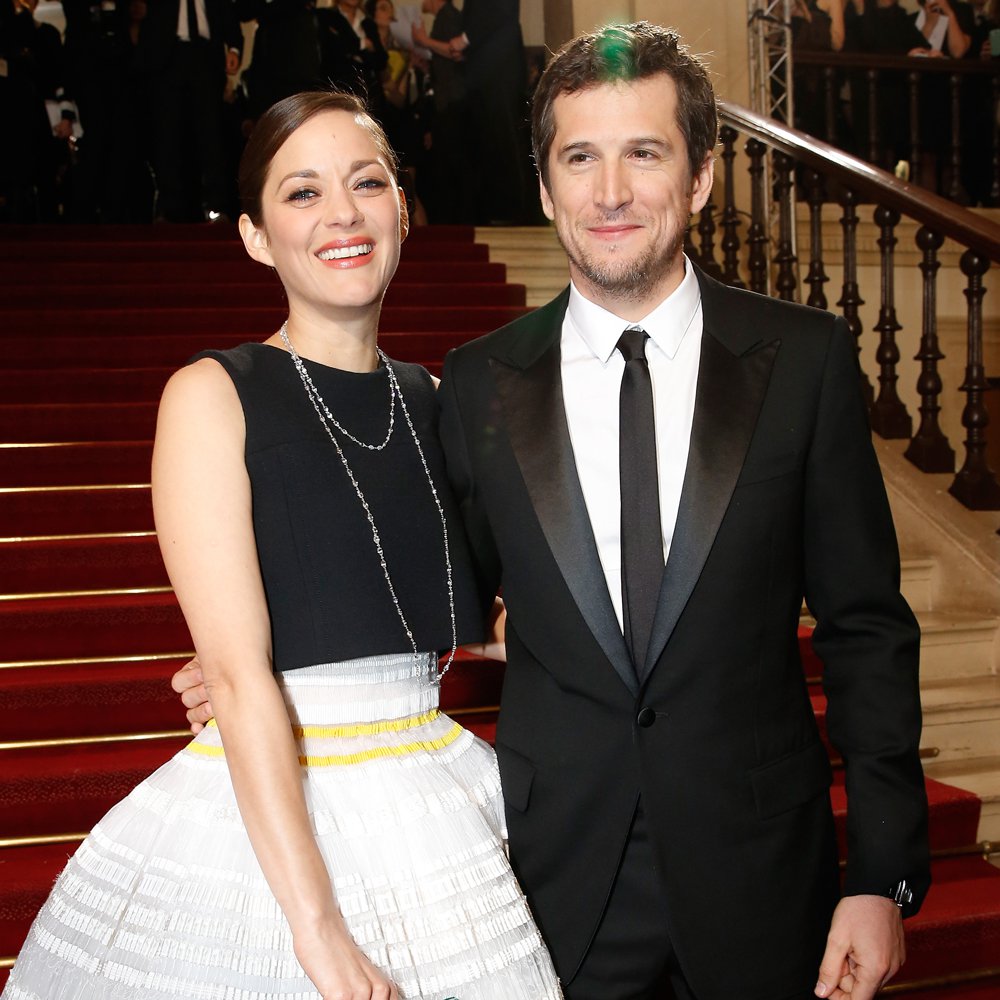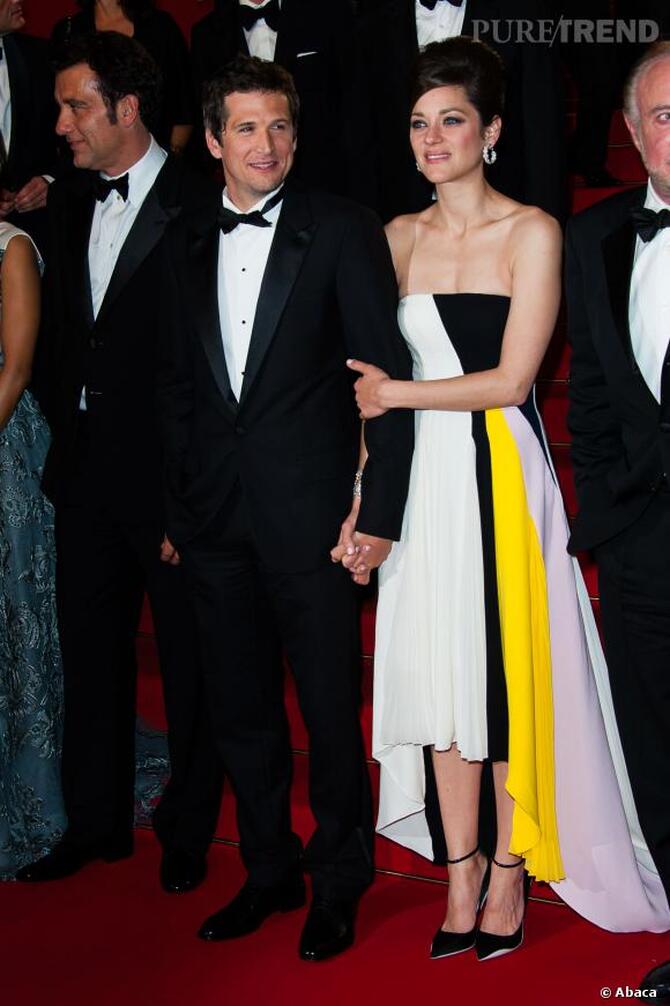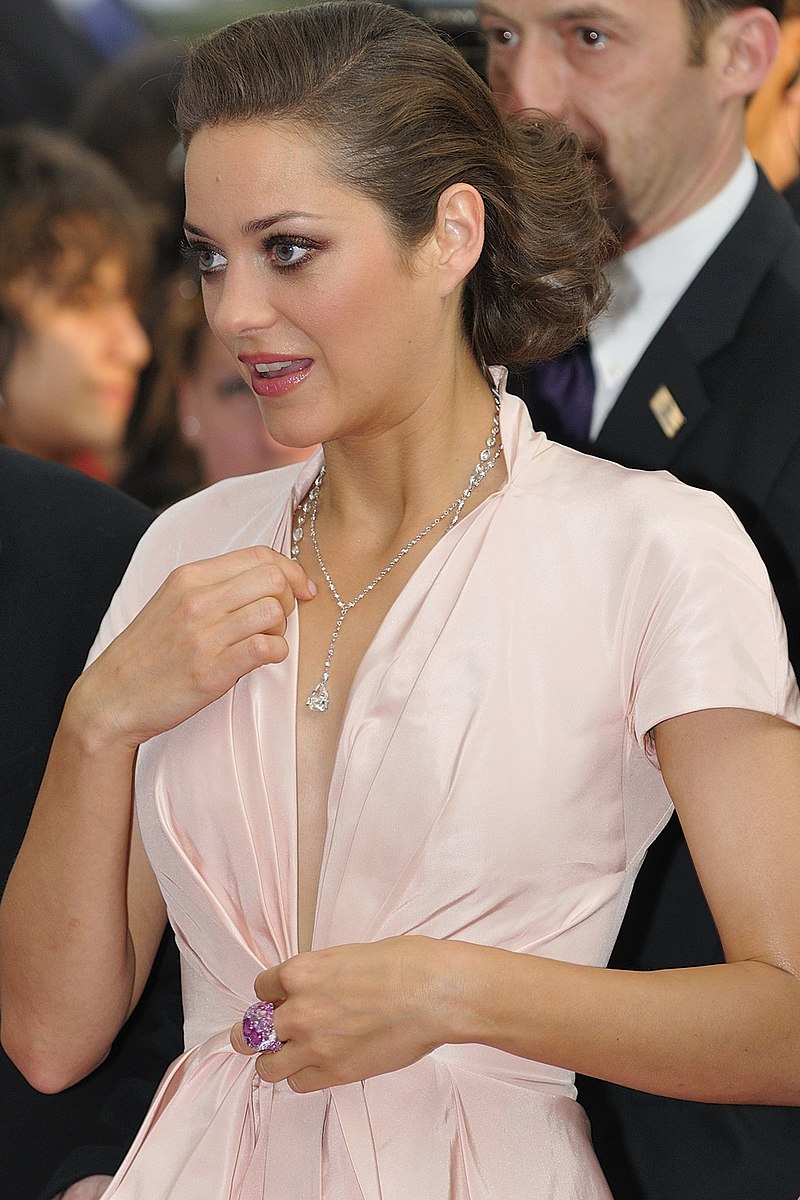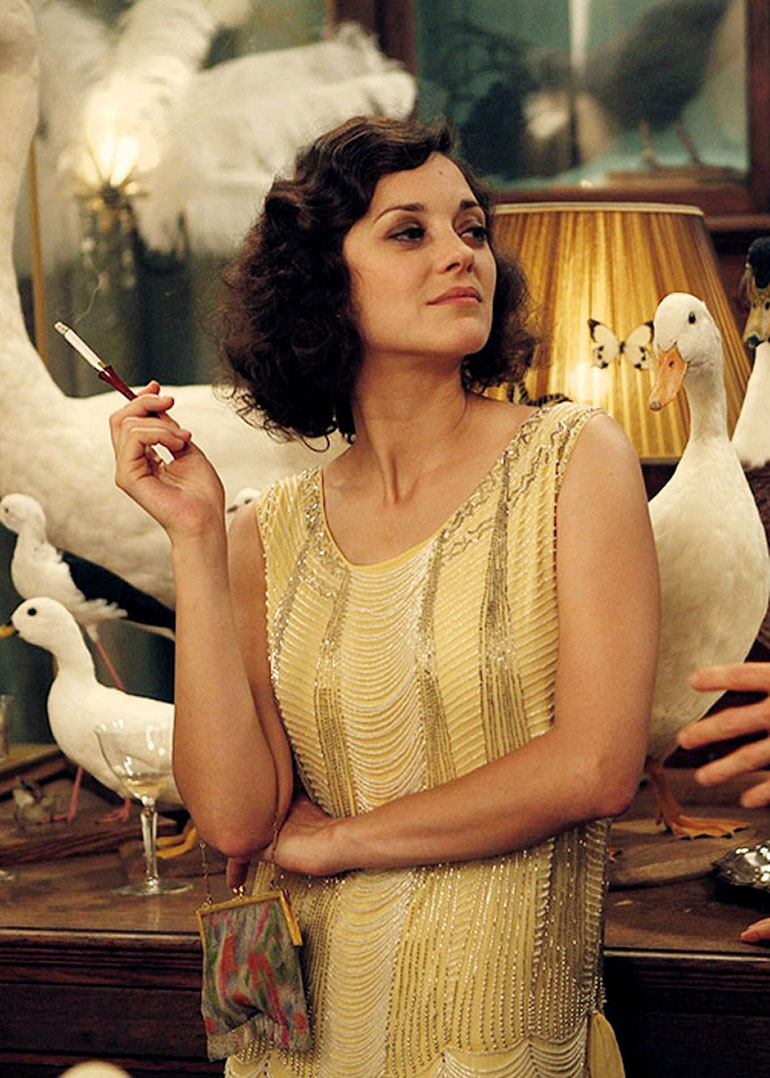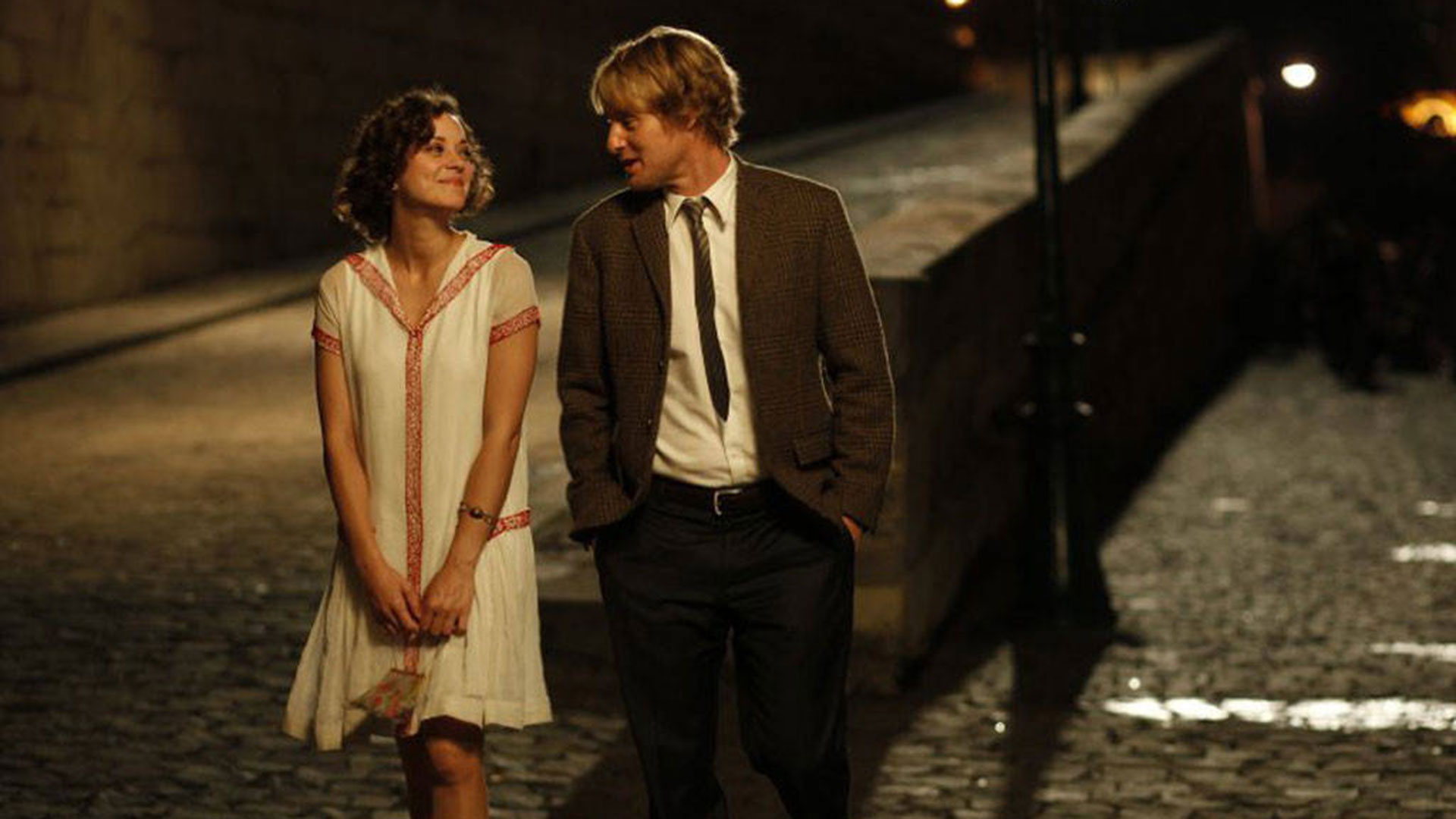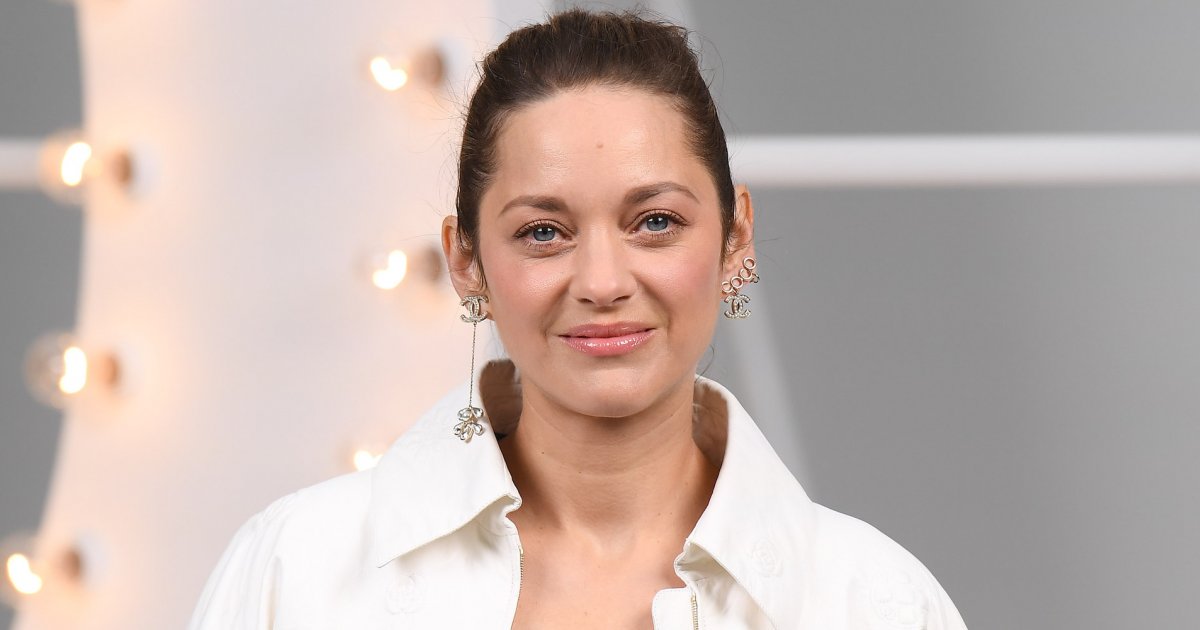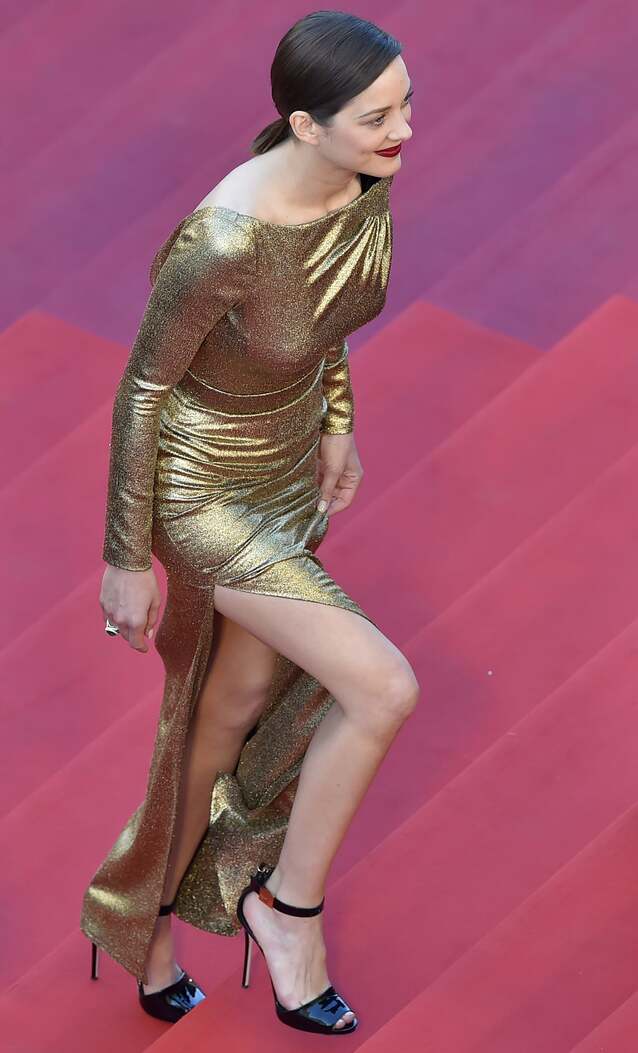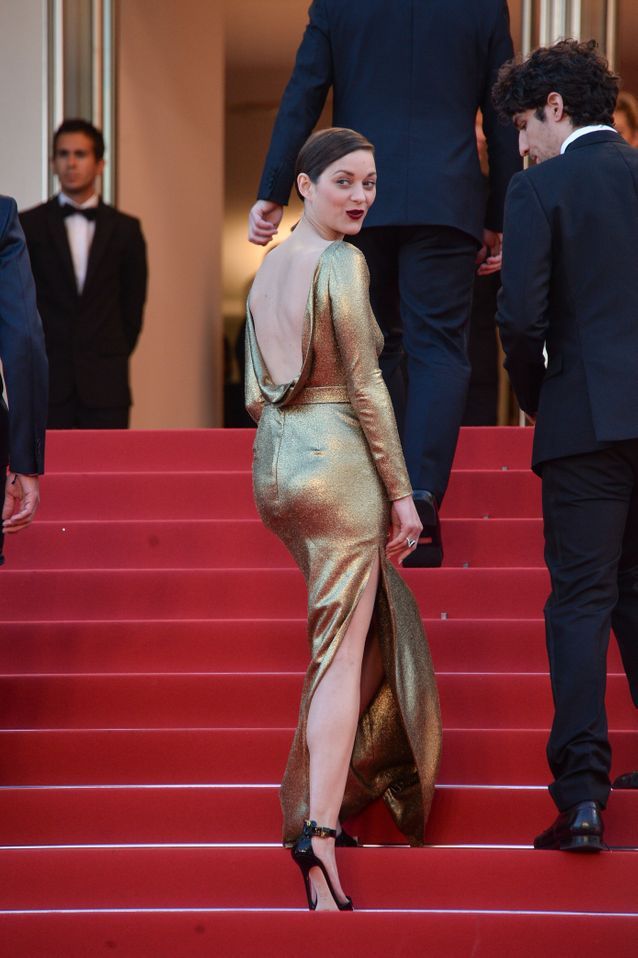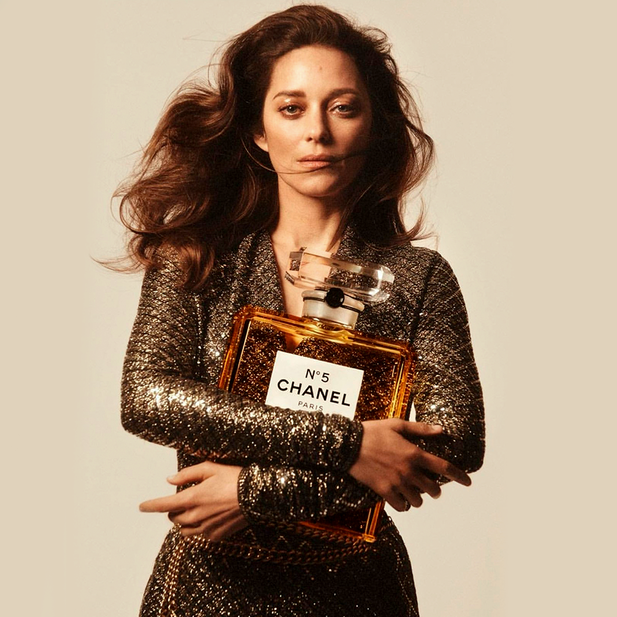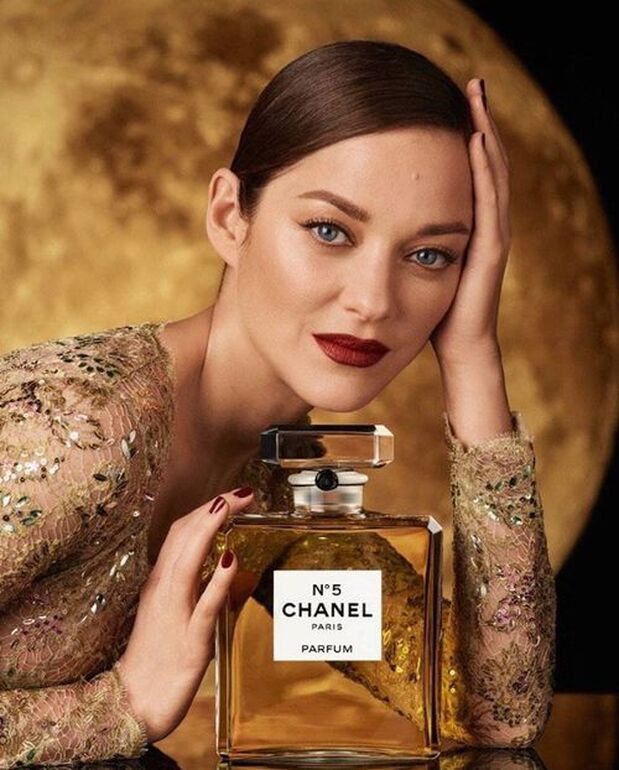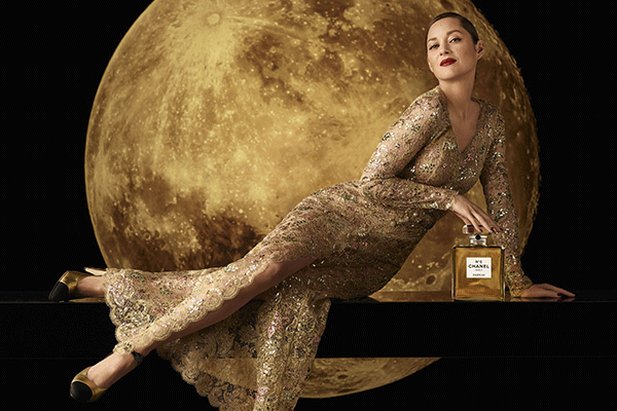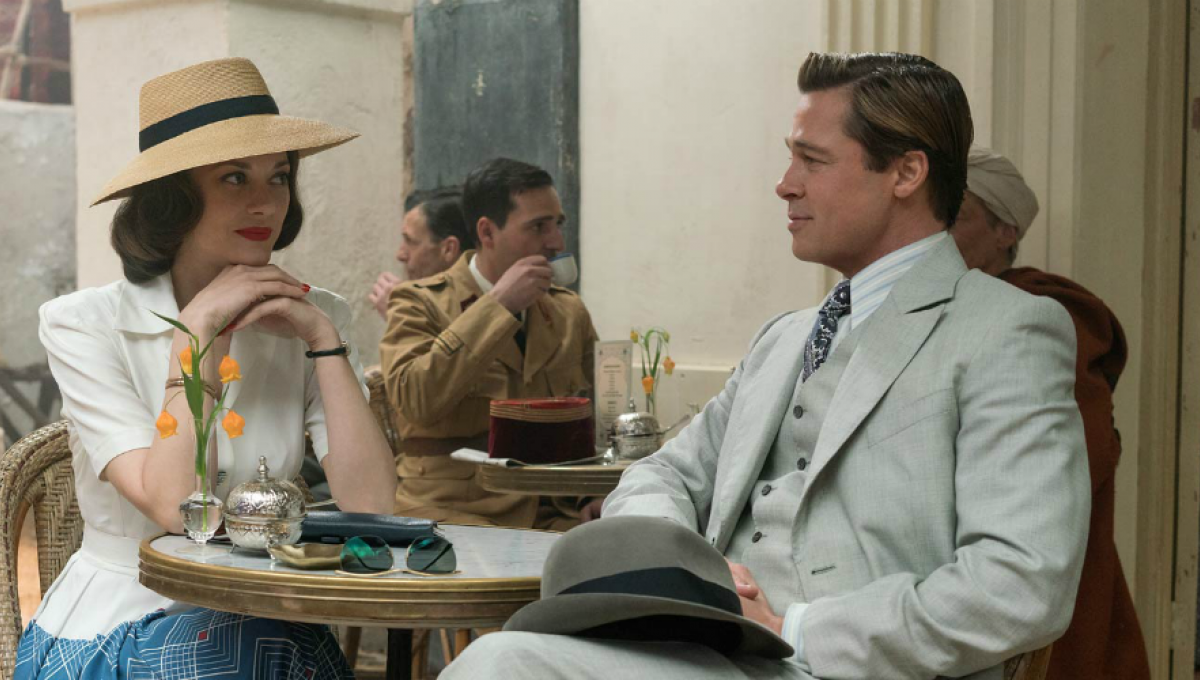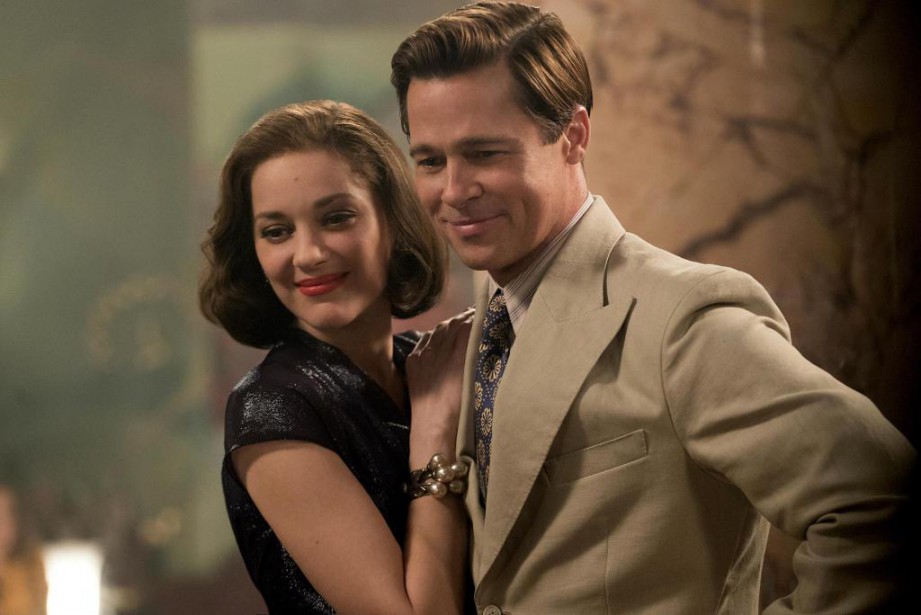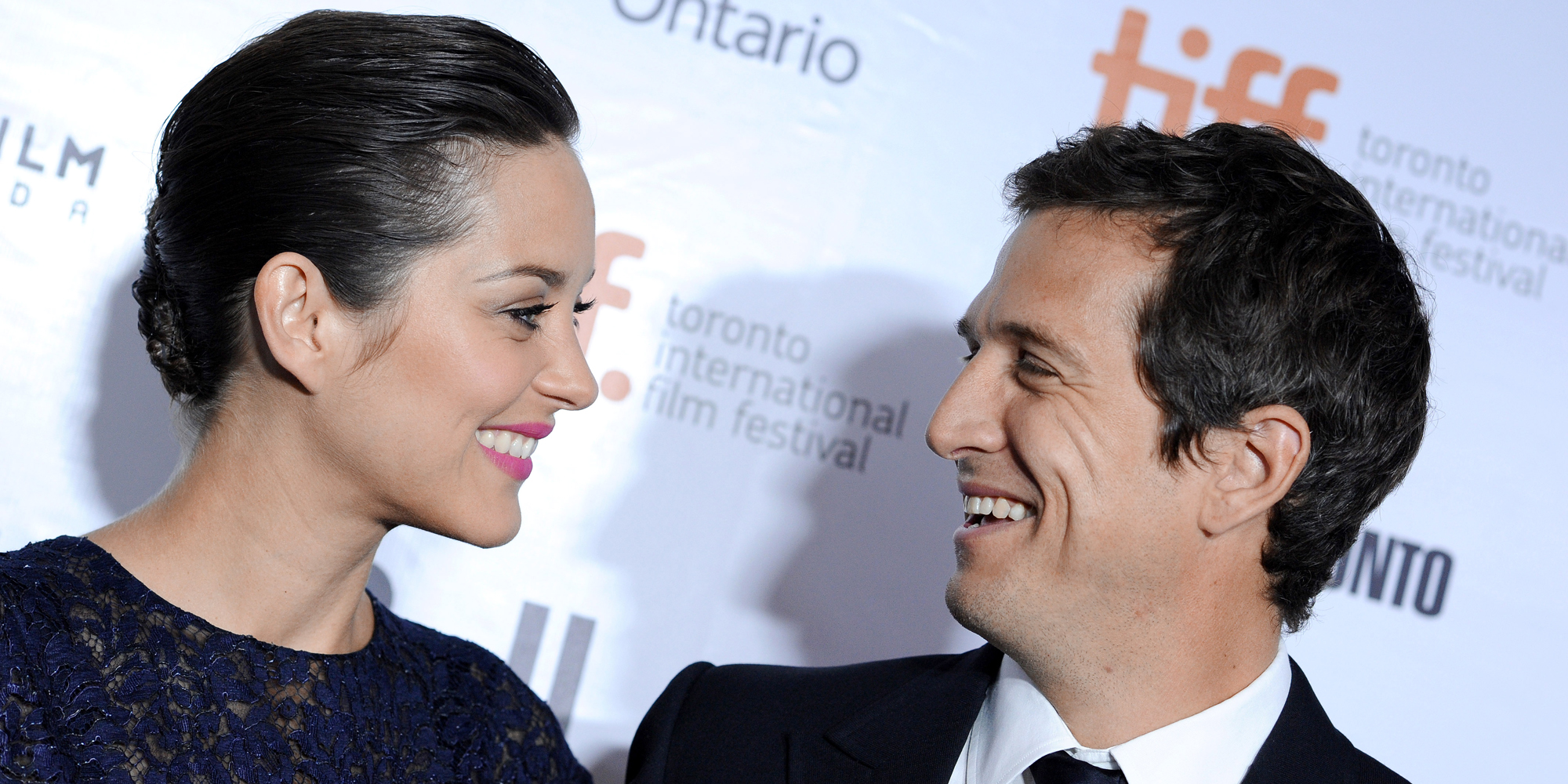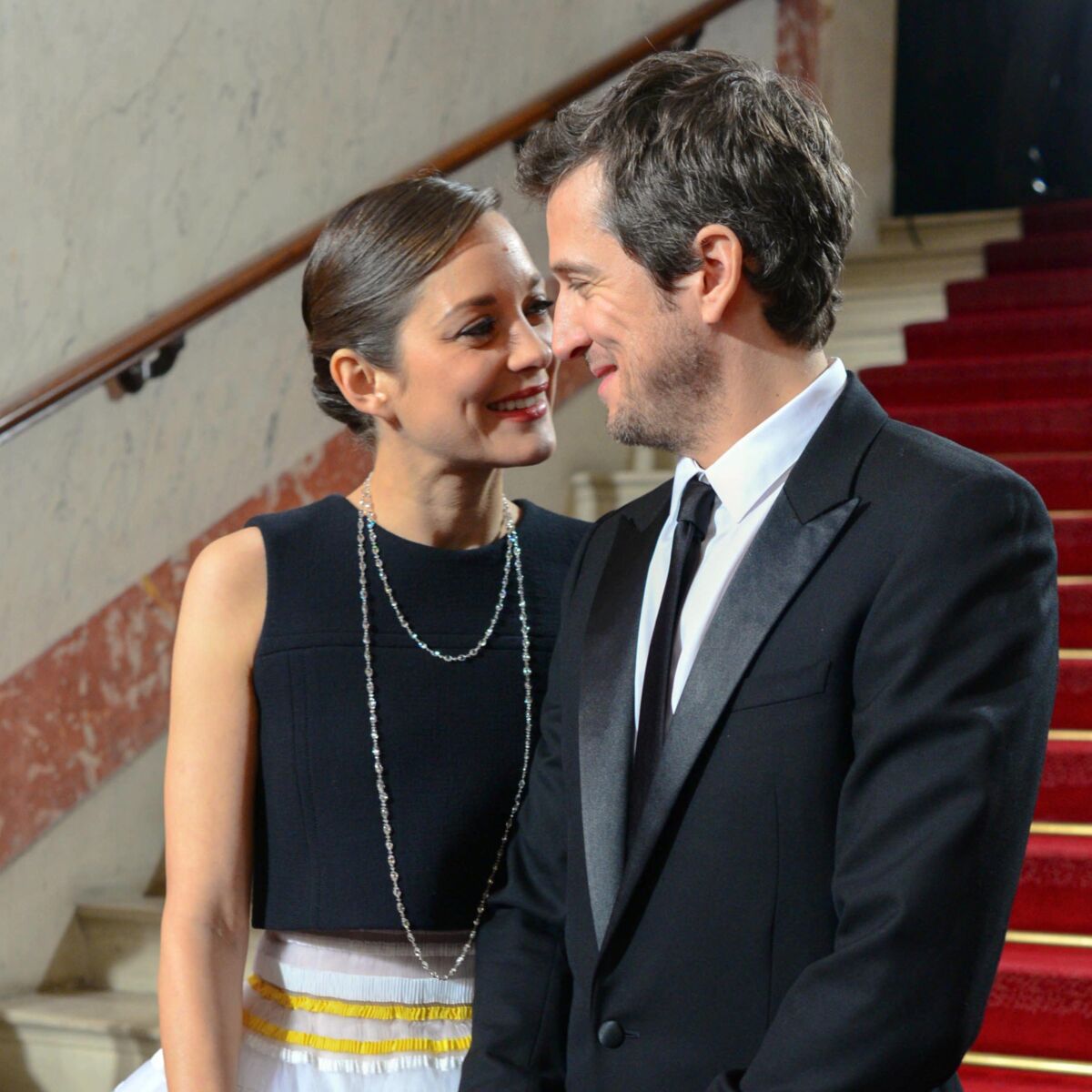|
María Casares (21 November 1922 – 22 November 1996) was a Spanish-French actress and one of the most distinguished stars of the French stage and cinema. She was credited in France as Maria Casarès. María Victoria Casares Pérez, también conocida como Maria Casarès (La Coruña, España, 21 de noviembre de 1922 - Alloue, Charente, Francia, 22 de noviembre de 1996) fue una actriz de teatro y cine española nacionalizada francesa que triunfó como exiliada en este último país, donde residió desde su juventud desde 1936, a raíz del exilio de su padre, el político Santiago Casares Quiroga, que había sido ministro y jefe de Gobierno de la Segunda República Española bajo la presidencia de Manuel Azaña. Nacionalizada francesa en 1975 y considerada francesa por los franceses —que escriben su nombre Maria Casarès—, integró junto a Edwige Feuillère y Madeleine Renaud el grupo de trágicas galas más notable de su generación. Maria Casarès est une actrice française d'origine espagnole, née le 21 novembre 1922 à La Corogne (Galice, Espagne) et morte le 22 novembre 1996 à Alloue (Charente), France. Elle est une des grandes tragédiennes du théâtre français de 1942 à 1996, également actrice pour le cinéma et la télévision : elle est apparue dans de nombreux classiques du cinéma — dont Les Enfants du paradis et Les Dames du bois de Boulogne —, notamment dans les années 1940 et 1950. BiographyMaría Casares was born María Victoria Casares y Pérez in A Coruña, Galicia, the daughter of Santiago Casares Quiroga, a minister in Manuel Azaña's government and Prime Minister of Spain, and of Gloria Pérez. She has a half sister from his father's previous relation. Her father, as a member of the Republican government, was forced to flee Spain with his family at the outbreak of the Spanish Civil War (1936). Her father went to London, but she and her mother sought refuge in Paris. There, María attended the Victor Duruy school, where she learned French and was befriended by a teacher and his Spanish wife, who inspired her to go into the theatre. After graduation, she took voice classes with René Simon. She enrolled in the Paris Conservatoire, where she won First Prize for tragedy and Second Prize for comedy. In July 1942, she auditioned for Marcel Herrand who engaged her for his Théâtre des Mathurins. There, over the course of the next three years, she appeared in several plays including, Deirdre of the Sorrows by J. M. Synge, The Master Builder by Ibsen, Le Malentendu (The Misunderstanding) by Albert Camus (with whom she would later have a passionate affair), and an especially important premiere, Fédérico, after Prosper Mérimée, with Gérard Philipe. She also began to appear in films. Her first film role was in Marcel Carné's Les Enfants du paradis (1945), one of the great classics of French cinema. She also made Les dames du Bois de Boulogne (1945) for Robert Bresson, La Chartreuse de Parme (The Charterhouse of Parma) (1948) for Christian-Jaque, co-starring Gérard Philipe. For Jean Cocteau, she played Death in his Orphée (1950) and in his Testament d'Orphée (Testament of Orpheus) (1960). From 1952 onward, although she continued to appear in occasional films, she devoted herself mainly to the stage. She joined the Festival d'Avignon, the Comédie-Française and the Théâtre National Populaire under the leadership of Jean Vilar. Before her, no one actor or actress of foreign origin had ever played at Comédie-Française. She toured extensively throughout the world, appearing in the great classics of French theatre, including, in 1958, Corneille's Le Cid, Victor Hugo's Marie Tudor and Marivaux' Le Triomphe de l'Amour (The Triumph of Love) on Broadway. In 1989, she was nominated for the César Award for Best Supporting Actress in La Lectrice. María Casares took French nationality in 1975 and three years later married André Schlesser, an actor known professionally as Dade, who had been her longtime companion and theatrical co-star. She published her autobiography, Résidente privilégiée (Privileged Resident) in 1980, in which she described her 16-year affair with Albert Camus. The couple never married, but their extensive correspondence, first published in France in late 2017, lasted from 1944, with a five year break to 1949, when they again had a chance meeting when their passion was rekindled until the end of Camus' life. She starred in a number of Albert Camus's plays and often threatened to end their stormy affair over his refusal to leave his wife Francine Faure. The actress died of colon cancer at her country house, Château de La Vergne, in the village of Alloue in Poitou-Charentes, on the day after her 74th birthday. She bequeathed the property to the village. Today, the Domaine de la Vergne is a residence for artists and a setting for performances. BiografíaMaría Casares nació el 21 de noviembre de 1922 en La Coruña, hija de Santiago Casares Quiroga (1884-1950), político que llegó a ser ministro y jefe del gobierno de la II República Española y se vio obligado a dimitir el 18 de julio de 1936 al estallar el levantamiento militar. Su madre fue Gloria Pérez Corrales, fallecida en París en 1945. María no fue una niña querida y declararía mucho más tarde con humor: "Cuando mis padres me tuvieron fue por distracción o torpeza". Tuvo una medio hermana, Esther Casares, nacida de una relación anterior de su padre. Estudió en el Collège Français de La Coruña, situado en la zona de Riazor (Av. Habana, 4). En 1931, la familia se trasladó a Madrid. En su nuevo establecimiento comenzó a hacer teatro. A causa de la Guerra Civil, salieron de España y llegaron a París el 20 de noviembre de 1936, previo paso por Barcelona, junto a su madre y un amigo, Enrique López Tolentino, militante trotskista de 18 años y amante de su madre, que posteriormente en París se convertirá en el primer amante de María. Se alojaron en el Hotel Paris-Nueva York, rue de Vaugirard (hoy desaparecido). Estudió en el Instituto Victor-Duruy, donde aprendió francés. Conoció al actor español Pierre Alcover y a su esposa, miembro de la Comedia Francesa, Colonna Romano. Este ayudó a la familia Casares e incitó a María a dedicarse al teatro. Estudió interpretación en el Conservatorio de París, en el que había conseguido entrar en 1941 a pesar de sus dificultades con el idioma. A través de un arduo trabajo, ingresó en esa prestigiosa institución, en la que interpretó a Hermione y Eriphile. Tiene como profesora a Béatrix Dussane y hace amistad con Alice Sapritch. Obtuvo un primer premio de tragedia y un segundo premio de comedia. El primer papel profesional que obtuvo fue en La Celestina. Atrae la atención de Jean Marchat y Marcel Herrand que entre 1942 y 1944, montan para ella Deirdre de los pesares de Synge, Le Voyage de Thésée de Georges Neveux, con gran éxito, y Solness el constructor de Henrik Ibsen. En 1944 conoció a Albert Camus, con quien mantuvo una relación sentimental hasta la muerte de este en 1960. Protagonizó varias obras escritas por Camus, como El malentendido, El estado de sitio y Los justos, y representó obras de Sartre, Jean Anouilh, Jean Cocteau, Genet y Claudel, convirtiéndose en musa del existencialismo francés. En 1949, entra en la Comédie Française y cinco años más tarde en el Teatro Nacional Popular (TNP), compañía pública con una fuerte preocupación social. Participó en la creación y potenciamento del Festival de Aviñón. María Casares interpretó a Lady Macbeth, María Tudor, Ana Petrova, etc. en obras de Shakespeare, Victor Hugo y Antón Chéjov, Ibsen, Eurípides, entre muchos otros En el cine se inició en el clásico de Marcel Carné, Les enfants du paradis y poco después, en 1944, protagoniza Las damas del Bosque de Boloña de Robert Bresson. Jean Cocteau la dirigió en Orphée (1950) y se hizo muy popular, si bien en España fue silenciada Hizo memorables trabajos junto a Gérard Philipe, Jean Vilar y Jean Louis Barrault. En 1976 volvió a España para representar El adefesio de Rafael Alberti en Madrid, Barcelona y Murcia. En esta última fue ovacionada y le arrojaron flores desde el público. En 1980 adquirió la nacionalidad francesa. En 1989 consiguió el Premio Molière a la mejor actriz de teatro y fue nominada a los César. Recibió del gobierno francés el Premio Nacional de Teatro, y en España, la Medalla al Mérito de Bellas Artes. Obtuvo el Premio Segismundo de la Asociación de Directores de España. También se le concedió el título de hija predilecta de La Coruña y la Medalla Castelao. En 1980 publicó un libro de memorias, Residente privilegiada, título que alude a su estatus en la tarjeta de residencia original emitida por Francia. Fue condecorada con la Legión de honor francesa. En 1996, María Casares aceptó que los premios de teatro de Galicia llevaran su nombre, pero la muerte le impidió asistir a su primera edición. María Casares conoció a Albert Camus el 19 de marzo de 1944 en la casa de Michel Leiris. Desarrollaron una relación amorosa durante los ensayos de Le malentendu en 1944, donde interpretó a Martha. El escritor, que pone en contacto a María con la Resistencia y los exiliados españoles, es para la actriz "padre, hermano, amigo, amante y a veces hijo". El fin de la guerra, el regreso desde Argelia de Francine Faure, esposa de Camus desde el 3 de diciembre de 1940, el nacimiento de los gemelos Catalina y Jean, los separó; rompieron. Se encontraron por casualidad de nuevo en 1948 y mantuvieron un apasionado romance secreto que sólo terminó con la muerte por accidente del escritor en 1960. Catherine Camus recuerda a María Casares como "una actriz memorable y el gran amor de su padre" (Albert Camus). Fue "la mujer de su vida". Ello no obstante, Camus le confesó a Jean Grenier que nunca se casaría con ella; por su parte la actriz contó su relación con el escritor en su autobiografía Residente privilegiada. Para María Casares, Camus será el Único, el único hombre que ella amaba de verdad; un amor que permanecerá más allá de la muerte. Tal vez ella fue el gran amor de su vida. Tras la muerte de Albert Camus, en un intento de distraerla de su profundo dolor, los amigos íntimos de María Casares —entre los cuales estaba el actor alsaciano André "Dadé" Schlesser— la animaron a comprar una casa (no tenía nada en Francia). El 5 de agosto de 1961, María Casares y André Schlesser compraron a partes iguales la casa solariega, los edificios anexos y las tierras del dominio de La Vergne, situado en el municipio de Alloue, del departamento de Charente. El 27 de junio de 1978 se casó con él, que fallecería en Saint-Paul-de-Vence el 15 de febrero de 1985. La pareja vivía en la calle Asseline n.º 6, en el distrito XIV de París. Tras la muerte de André, sus hijos Anne y Gilles Schlesser dejaron a María Casares la parte del dominio de La Vergne que pertenecía a su padre. Fue enterrada junto a su marido en el cementerio del municipio de Alloue. Para agradecer a Francia el haber sido una tierra de asilo, María Casares, sin descendientes, donó a este municipio la finca y la casa señorial de La Vergne -que ya le pertenecía en su totalidad- situada en la margen derecha del Charente, aguas arriba del pueblo. El lugar es un lugar de encuentros y conferencias que toma el nombre de "La Maison du comédien - Maria Casarès". BiographieMaría Victoria Casares Pérez naît le 21 novembre 1922 à La Corogne à la pointe nord-ouest de l'Espagne. Elle est la fille de Santiago Casares Quiroga, né à La Corogne en 1884 et mort à Paris en 1950, avocat de profession, mais littéraire dans l'âme et Premier ministre de la Seconde République espagnole, contraint de démissionner le 18 juillet 1936 lorsqu'éclate l'insurrection militaire. Sa mère est Gloria Pérez Casarès, morte à Paris en 1946. Maria n'est pas une enfant désirée et déclare bien plus tard avec humour : « Quand mes parents m'ont eue, ce fut par distraction ou par maladresse. » Elle a une demi-sœur, Esther Casarès, née d'une première union de son père. Elle étudie au collège de La Corogne. En 1931, la famille s'installe à Madrid. Dans sa nouvelle école, elle commence à chanter dans le théâtre. Au début de la guerre d'Espagne, la famille fuit l'Espagne pour Paris le 20 novembre 1936, la veille de l'anniversaire de Maria. Le père de Maria est francophone. Ils vivent à l'hôtel Paris-New York, rue de Vaugirard (hôtel aujourd'hui disparu). Elle étudie à l'école secondaire Victor-Duruy, où elle apprend le français. Elle rencontre l'acteur espagnol Pierre Alcover et son épouse Colonna Romano, membre de la Comédie-Française. Il aide la famille Casares et pousse Maria à faire du théâtre. Elle échoue une première fois à intégrer le Conservatoire national de musique et d'art dramatique en raison de son accent trop prononcé. Pendant la Seconde Guerre mondiale, son père part pour l'Angleterre ; elle et sa mère se rendent dans les Landes avant de revenir à Paris dans un appartement au coin de l'impasse de l'Enfant-Jésus et de la rue de Vaugirard. À force de travail, elle réitère et intègre le prestigieux établissement, jouant Hermione et Eriphile, après avoir fréquenté le cours Simon, mais échoue aux épreuves du deuxième baccalauréat. Elle a pour professeur Béatrix Dussane et se lie avec Alice Sapritch. Elle en sort avec un premier accessit de tragédie et un second prix de comédie. Elle est remarquée par Jean Marchat et Marcel Herrand qui montent pour elle de 1942 à 1944 Deirdre des douleurs de Synge, Le Voyage de Thésée de Georges Neveux, Solness le constructeur d'Henrik Ibsen et Le Malentendu d’Albert Camus. Maria Casarès obtient son premier rôle en 1942 et au cours des cinq décennies suivantes, jusqu'à l'année de sa mort, joue dans plus de 120 pièces, aussi bien des classiques que des œuvres contemporaines. André Barsacq lui fait jouer Roméo et Jeannette de Jean Anouilh avec, pour la première fois, Jean Vilar au théâtre de l'Atelier en 1946. De 1952 à 1954, elle est engagée comme pensionnaire de la Comédie-Française, où elle joue notamment dans des mises en scène de Julien Bertheau, Jean Meyer (créations) ou encore Jacques Copeau (reprise). Elle intègre ensuite le TNP de Jean Vilar (1954-1959), et devient ainsi l'une des premières comédiennes à donner au Festival d'Avignon ses lettres de noblesse. Elle participe à certaines créations du théâtre contemporain comme Paravents de Jean Genet, en 1966, ou Quai Ouest, de Koltès, en 1986. La quasi-totalité de sa filmographie est constituée de films français. Certains vont jusqu'à la qualifier de « monstre sacré », expression habituellement réservée à des acteurs ayant une plus grande notoriété que la sienne. Plus objectivement, les cinéphiles s'accordent en général à retenir en priorité les quatre rôles marquants tenus dans les années 1940 : Les Enfants du paradis, Les Dames du bois de Boulogne, La Chartreuse de Parme et Orphée. Elle déclare pourtant préférer le théâtre au cinéma : « Spectatrice pourtant passionnée et émerveillée devant les acteurs de cinéma qui ont su créer à travers leurs films des figures presque mythiques, peut-être parce que je porte en moi une autre forme de narcissisme, je n'ai jamais pu de l'autre côté de la caméra m'attacher à une telle quête. » Maria Casarès rencontre Albert Camus le 19 mars 1944 chez Michel Leiris. Ils nouent une relation amoureuse pendant les répétitions du Malentendu, en 1944, où elle joue Martha. L'écrivain, qui met Maria au contact de la Résistance et des exilés espagnols, est pour la comédienne « père, frère, ami, amant, et fils parfois ». La fin de la guerre, le retour d'Algérie de Francine Faure, l'épouse de Camus depuis le 5 septembre 1945, la naissance des jumeaux Catherine et Jean, les séparent : ils rompent. Ils se retrouvent par hasard en 1948 et entretiennent une liaison secrète passionnée qui ne prend fin qu'avec la mort accidentelle de l'écrivain, en 1960. Pour Albert Camus, Maria Casarès sera « l’Unique » ; et il restera, par-delà la mort, le seul homme qu’elle ait véritablement aimé. Elle fut peut-être le grand amour de sa vie. Après la mort d'Albert Camus, pour tenter de la détourner de son profond chagrin, les amis proches de Maria Casarès — parmi lesquels André Schlesser — l'incitent à s'acheter une maison (elle ne possédait rien en France). Le 5 août 1961, Maria Casarès et André Schlesser achètent — une partie chacun — le manoir, les dépendances et les terres de la Vergne, situés sur la commune d'Alloue. Elle épouse le 27 juin 1978 cet ami de longue date, André Schlesser, mort à Saint-Paul-de-Vence en 1985. Le couple vécut au 6 de la rue Asseline, dans le 14e arrondissement de Paris. Après la mort d'André Schlesser, ses enfants Anne et Gilles Schlesser lèguent à Maria Casarès la partie du domaine de La Vergne qu'elle ne possédait pas. Elle succombe à un cancer le 22 novembre 1996 à Alloue en Charente. Elle repose à côté de son mari dans le cimetière de cette commune. Maria Casarès est considérée comme l'une des plus grandes tragédiennes françaises de la seconde moitié du xxe siècle. Ses prestations au Festival d'Avignon, pour le rôle de Lady Macbeth notamment, restent une référence. Galicienne de naissance et espagnole de nationalité, elle est une des comédiennes de théâtre les plus marquantes des années 1950 et 1960, passant du drame shakespearien à la primesauterie de Marivaux et d'Albert Camus à Tchekhov. Pour remercier la France d'avoir été une terre d'asile, Maria Casarès, sans descendance, fait don à la commune d'Alloue du domaine et du logis de La Vergne — qui, désormais, lui appartiennent donc en entier — situés sur la rive droite de la Charente, en amont du village.
En 1999, l'association La Maison du Comédien - Maria-Casarès est créée pour faire du domaine un centre culturel consacré au théâtre. Jusqu'en 2017, elle est présidée par le comédien François Marthouret. En 2017, l'association change de nom et devient La Maison Maria-Casarès aujourd'hui centre culturel de rencontre et Maison des Illustres.
0 Comments
Mary Moser RA (27 October 1744 – 2 May 1819) was an English painter and one of the most celebrated women artists of 18th-century Britain. One of only two female founding members of the Royal Academy in 1768 (along with Angelica Kauffman), Moser painted portraits but is particularly noted for her depictions of flowers. BiographyMary Moser was born in London. She was trained by her Swiss-born artist and enameller father George Michael Moser (1706–1783), George III's own drawing master. Her talents were evident at an early age: she won her first Society of Arts medal at 14, and regularly exhibited flower pieces, and occasional history paintings, at the Society of Artists of Great Britain. Ten years later, however, her thirst for professional recognition led her to join with 35 other artists (including her father) in forming the Royal Academy, and, with Angelica Kauffman, she took an active role in proceedings. In a group portrait by Johan Zoffany, The Academicians of the Royal Academy (1771–72; Royal Collection, London), members are shown gathered around a nude male model at a time when women were excluded from such training in order to protect their modesty. So that Moser and Kauffman could be included, Zoffany added them as portraits hanging on the wall. George Romney (c. 1770) painted a portrait of Moser at work on a still life which was acquired by the National Portrait Gallery (London) in 2003. Her influences include the older Dutch masters, famed for glowing color against dark backgrounds. From the beginning, her approach was "bold and luxurious," writes Germaine Greer. In the 1790s, Moser received a prestigious commission, for which she was paid over £900, from Queen Charlotte to complete a floral decorative scheme for a room in Frogmore House in Windsor, Berkshire. This was to prove one of her last professional works. At 53, she married Captain Hugh Lloyd, the widower of a friend on 23 October 1793. She retired and began exhibiting as an amateur under her married name. She continued showing at the Royal Academy until 1802. At this period Moser had a brief affair with artist Richard Cosway, who was then separated from his wife Maria Cosway, an Anglo-Italian artist. Moser travelled with him for six months on a sketching tour in 1793. "One of the most celebrated women artists of 18th-century Britain," Moser died in Upper Thornhaugh Street, London, on 2 May 1819, and was buried, alongside her husband in Kensington Cemetery. Moser's pieces in the British Royal Collection show that she was not only "the first significant British flower painter, she was also one of the best." Her portrait of famed British sculptor Joseph Nollekens hangs in the Yale Center for British Art. After Moser's death in 1819, no further women were elected as full members of the Academy until Dame Laura Knight in 1936.
Marion Cotillard (born 30 September 1975) is a French actress, film producer, singer, and environmentalist. Known for her roles in independent films and blockbusters, she has received various accolades, including an Academy Award, a British Academy Film Award, a Golden Globe Award, a European Film Award, a Lumières Award, and two César Awards. She became a Knight of the Order of Arts and Letters in France in 2010, and was promoted to Officer in 2016. She has served as a spokeswoman for Greenpeace since 2001. Cotillard was the face of the Lady Dior handbag for nine years. Since 2020, she is the face of Chanel's fragrance Chanel No. 5. Cotillard had her first English-language role in the television series Highlander (1993), and made her film debut in The Story of a Boy Who Wanted to Be Kissed (1994). Her breakthrough came in the successful French film Taxi (1998), which earned her a César Award nomination. She made the transition into Hollywood in Tim Burton's Big Fish (2003), and won her first César Award for her performance in Jean-Pierre Jeunet's A Very Long Engagement (2004). For her portrayal of French singer Édith Piaf in La Vie en Rose (2007), Cotillard won her second César Award, a BAFTA Award, a Golden Globe Award, a Lumières Award and the Academy Award for Best Actress, becoming the first and (as of 2022) only actor to win an Academy Award for a French-language performance, and also the second actress to have won this award for a foreign language performance. Her performances in Nine (2009), Rust and Bone (2012), and Annette (2021) earned Cotillard three more Golden Globe nominations. For Two Days, One Night (2014), she received a second Academy Award nomination for Best Actress, which was also her second nomination for a French-language film. Cotillard is one of only seven actors to receive multiple Academy Award nominations for foreign language performances. Her English-language films include Public Enemies (2009), Inception (2010), Contagion (2011), Midnight in Paris(2011), The Dark Knight Rises (2012), The Immigrant (2013), Macbeth (2015), and Allied (2016). Marion Cotillard est une actrice et productrice française née le 30 septembre 1975 à Paris. Active au cinéma depuis la fin des années 1990, elle est révélée au grand public par son rôle de compagne du héros dans la saga Taxi, qu'elle incarne dans les trois premiers films de la franchise. En février 2005, elle reçoit la première des grandes récompenses qui vont jalonner sa carrière : le César de la meilleure actrice dans un second rôle, pour seulement huit minutes de présence à l'écran dans le film Un long dimanche de fiançailles de Jean-Pierre Jeunet. En 2008, c'est la consécration internationale : son interprétation de la chanteuse Édith Piaf dans le film biographique La Môme d'Olivier Dahan lui attire de nombreuses récompenses, dont le César, le Golden Globe, le BAFTA et l'Oscar de la meilleure actrice. Elle devient notamment la première Française à être désignée « meilleure actrice » par l'Académie des arts et des sciences du cinéma pour un film tourné en langue française, et seulement la deuxième actrice à gagner ce prix pour un rôle parlé dans une langue étrangère. Ce triomphe critique l'accompagne également dans les années 2010 pour ses interprétations dans les films De rouille et d'os, The Immigrant, Deux Jours, une nuit et Macbeth, et consacre une carrière internationale aux choix artistiques variés, la menant à plusieurs reprises au Festival de Cannes. BiographyMarion Cotillard was born on 30 September 1975 in Paris and grew up around Orléans in an artistically inclined household. Her father, Jean-Claude Cotillard, is an actor, teacher, former mime, and theatre director, of Breton descent. Cotillard's mother, Monique Niseema Theillaud, is an actress and drama teacher of Algerian Kabyle background. She has two younger twin brothers, Quentin and Guillaume. Cotillard's father introduced her to cinema, and as a child she would mimic Louise Brooks and Greta Garbo in her own bedroom. She began acting during her childhood, appearing in one of her father's plays. At the age of 15, Cotillard entered the Conservatoire d'art dramatique in Orléans. She graduated in 1994 and then moved to Paris to pursue an acting career. After small appearances and performances in theatre, Cotillard had occasional, minor roles in television series such as Highlander—where she had her first English-speaking role aged 17. Her career as a film actress began in the mid-1990s, with minor roles in Philippe Harel's The Story of a Boy Who Wanted to Be Kissed (1994), which was her feature film debut at the age of 18, and in Arnaud Desplechin's My Sex Life... or How I Got into an Argument, and Coline Serreau's La Belle Verte (both 1996). Also in 1996, Cotillard had her first leading role in the television film Chloé, directed by Dennis Berry, with Cotillard starring as a teenage runaway who is forced into prostitution. In 1998, she appeared in Gérard Pirès' action comedy Taxi, playing Lilly Bertineau, the girlfriend of delivery boy Daniel, played by Samy Naceri. The film was a hit in France and Cotillard was nominated for a César Award for Most Promising Actress. She reprised the role in Taxi 2 (2000) and Taxi 3 (2003). Cotillard started the transition into Hollywood when she obtained a supporting role in Tim Burton's 2003 film Big Fish playing Joséphine, the French wife of Billy Crudup's character, William Bloom. Big Fish was a critical and commercial success. That same year, he also starred in the French romantic comedy film Love Me If You Dare (Jeux d'enfants) opposite French actor Guillaume Canet, as Sophie Kowalsky, the daughter of Polish immigrants. The film was directed by Yann Samuel and was a box office hit in France with over 1 million tickets sold. In 2004, she won the Chopard Trophy of Female Revelation at the Cannes Film Festival. In May 2005, Cotillard portrayed Joan of Arc for the first time in the Orléans Symphonic Orchestra's production of Arthur Honegger's oratorio Joan of Arc at the Stake at the Palais des Sports d'Orléans, in Orléans, France. She reprised the role several times when performing the oratorio in different countries in the following years. In 2006, the actress took on significant roles in four feature films, including Ridley Scott's romantic dramedy A Good Year, in which she portrayed Fanny Chenal, a French café owner in a small Provençal town, opposite Russell Crowe as a Londoner who inherits a local property. Marion Cotillard was chosen by director Olivier Dahan to portray the French singer Édith Piaf in the biopic La Vie en Rose, before he had even met her, saying that he noticed a similarity between Piaf's and Cotillard's eyes. The film was dubbed "the most awaited film of 2007" in France, where some critics said that Cotillard had reincarnated Édith Piaf to sing one last time on stage. At the Berlin International Film Festival, where the film premiered, Cotillard was given a 15-minute standing ovation. Hollywood talent agent, Hylda Queally, signed Cotillard shortly after its premiere at the festival. La Vie en Rose was a box office hit in France, gathering over 5 million admissions, and made US$86 million worldwide on a US$25 million budget. Cotillard is the first actress to win a Golden Globe for a foreign language performance since 1972. She is also the first person to win a Golden Globe for a foreign language performance. Since October 2007, Cotillard has been in a relationship with French actor and director Guillaume Canet. They had been friends since 1997, and co-starred together for the first time years later in the 2003 film Love Me If You Dare. In 2011, they had their first child, a son, Marcel, and in 2017, their second child, a daughter, Louise was born. On 10 February 2008, Cotillard became the first French actress to be awarded the BAFTA Award for Best Actress in a Leading Role since Stéphane Audran in 1973. At the Academy Awards, she won Best Actress, becoming the first woman and second person (after Adrien Brody, The Pianist) to win both a César and an Oscar for the same performance. Cotillard is also the second French actress to win this award and the third overall to win an Academy Award after Simone Signoret in 1960 and Juliette Binoche in 1997. She is the first Best Actress winner for a non-English language performance since Sophia Loren in 1961. She is also the first and (as of 2020) only winner of an Academy Award for a French-language performance. On 24 June 2008, Cotillard was one of 105 individuals invited to join the Academy of Motion Picture Arts and Sciences. In 2009, Cotillard starred in the film adaptation of the musical Nine, directed by Rob Marshall, playing Luisa Contini, the wife of Guido, played by Daniel Day-Lewis. Time magazine ranked Cotillard's performance in Nine as the fifth best female performance of 2009, and she was nominated for a Golden Globe for Best Actress in a Motion Picture – Musical or Comedy for her performance in Nine. Cotillard appeared on the cover of the November 2009 issue of Vogue with her Nine co-stars, and on the July 2010 cover by herself. On 27 February 2010, Cotillard was the Honorary President of the 35th César Awards ceremony. In the same year, she played Mal Cobb, a projection of Leonardo DiCaprio's character, Dom Cobb's deceased wife in Inception, directed by Christopher Nolan. Cotillard and Leonardo DiCaprio ranked No. 8 on Forbes's list of "Hollywood's Top Earning On-Screen Couples" for Inception, which made US$825 million at the worldwide box-office. In 2011, Cotillard starred in Woody Allen's Midnight in Paris alongside Rachel McAdams, Owen Wilson and Kathy Bates, as Adriana, a fictionalised mistress of Pablo Picasso with whom Wilson's character, Gil, falls in love. That same year, she ranked on the top of Le Figaro's 2011 list of the highest-paid French actors in 2010, the first time in nine years that a female had topped the list, and was tied with Kate Winslet as the highest-paid foreign actress in Hollywood. In Jacques Audiard's drama Rust and Bone (De rouille et d'os), alongside Matthias Schoenaerts, Cotillard portrayed the orca trainer Stéphanie, who loses her legs after an accident at work and begins a strange relationship with Schoenaerts' character. The film premiered in the main competition at the 2012 Cannes Film Festival in May 2012 and received a ten-minute standing ovation at the end of its screening. She received a fifth César Award nomination, a fourth Screen Actors Guild Award nomination, a third Golden Globe nomination (her first nomination for Best Actress – Drama) as well as several honours and career tributes in 2012. She had her first leading role in an American movie in James Gray's The Immigrant, starring as the Polish immigrant Ewa Cybulska, who wants to experience the American dream in 1920s New York, starring opposite Joaquin Phoenix and Jeremy Renner. James Gray wrote the movie especially for Cotillard after meeting her at a French restaurant. Gray stated that Cotillard is the best actor he's ever worked with. Cotillard had to learn 20 pages of Polish dialogue for her role. In 2014, she starred in Dardenne brothers' Two Days, One Night (Deux jours, une nuit), portraying Sandra, a Belgian factory worker who has just one weekend to convince her co-workers to give up their bonuses so that she can keep her job. The film premiered in the main competition at the 2014 Cannes Film Festival and earned a 15-minute standing ovation, with her performance being named "the best performance of the festival". Cotillard was nominated for a second Academy Award and for a sixth César Award. In 2016, Cotillard played Gabrielle, a free-spirited woman in a convenience marriage, in Nicole Garcia's From the Land of the Moon (Mal de Pierres), an adaptation of the bestselling Italian novel Mal di Pietre by Milena Agus, which marked her return to French cinema. The same year, Cotillard starred opposite Brad Pitt in Allied (2016), a spy film set in World War II directed by Robert Zemeckis, in which she played Marianne Beausejour, a French Resistance fighter.The film grossed US$120 million worldwide. On 30 January 2017, Cotillard was honoured with a special award for her career at the 22nd Lumières Awards in France. In 2021, she starred as Ann Defrasnoux alongside Adam Driver in the musical film Annette directed by Leos Carax. Her performance in Annette earned her a Golden Globe nomination for Best Actress in a Motion Picture – Musical or Comedy. Cotillard produced the documentary Bigger Than Us, directed by Flore Vasseur, which explores the social movement of young people fighting for change in the 21st Century. The documentary was released on 22 September 2021 in France, and it was nominated for a César Award for Best Documentary Film in 2022. In addition to her film work, Cotillard is active in philanthropy, environmental activism, and has participated in campaigns for environmental protection, in particular Greenpeace, for whom she has been a member and acted as a spokesperson since 2001. During the 2022 Cannes Film Festival, Cotillard launched alongside filmmaker Cyril Dion and producer Magali Payen her new production company, Newtopia. The company's central aim is to create content around issues such as environmentalism, science, society, health, geopolitics, feminism and gender "that imagine a better future for the world based on ecologically sustainable and socially fair practices". In 2008, Cotillard was chosen as the face of Dior's bag "Lady Dior", and was featured in an online short film directed by John Cameron Mitchell about the fictional character created by John Galliano. She starred in a series of short films that were situated in different cities to promote the "Lady Dior" handbags: Lady Noire Affair (in Paris) directed by Olivier Dahan; Lady Blue Shanghai, directed by David Lynch; Lady Rouge (in New York City), directed by Jonas Akerlund; and Lady Grey London, directed by John Cameron Mitchell. In 2012, Cotillard starred in the web-series Lady Dior Web Documentary and wrote and performed the song "Lily's body" for one episode, she also designed her own handbag for Dior, the "360° bag". Cotillard also appeared on the cover of the first issue of Dior Magazine in September 2012. Cotillard's contract with Dior ended in 2017. In May 2013, Cotillard became the first actress to walk the red carpet of the Cannes Film Festival wearing the initial models from the Chopard Green Carpet Collection. In 2015, she designed a bracelet for Chopard's Green Carpet Collection made of ethical Fairmined-certified gold. In 2020, Cotillard designed her own sustainable jewelry collection for Chopard entitled "Ice Cube Capsule". She designed seven items curated from Fairmined-certified ethical gold and diamonds. The collection was unveiled on 29 September 2020 during Paris fashion week. On 17 February 2020, Cotillard was announced as House ambassador and the new face of the Chanel No. 5 fragrance. Her first commercial for Chanel No. 5 was released on 29 October 2020. It was directed by Johan Renck and featured Cotillard dancing in the moon with French ballet dancer Jérémie Bélingard while singing a cover of Lorde's "Team". As of 2022, Cotillard has appeared on more than 300 magazine covers around the world, such as Vogue, Elle, Marie Claire, Variety, Harper's Bazaar, Vanity Fair, Madame Figaro, Glamour, W, Porter, The Hollywood Reporter and Wall Street Journal Magazine. She was the first actress on a Vogue Paris September cover in five years with her September 2010 cover, and was named "Woman of the Decade" by Vogue Paris on their list of the "40 Women of The Decade" in 2010. In August 2012, Cotillard was featured in three major magazine covers: the American Vogue, Vogue Paris and Marie Claire UK. BiographieNée le 30 septembre 1975 dans le 12e arrondissement de Paris, Marion Cotillard est issue d'une famille d'artistes. Ses parents sont tous deux comédiens et professeurs d'art dramatique ; sa mère Niseema Theillaud, de son vrai nom Monique Theillaud, serait, selon certaines sources, d'origine kabyle, et son père Jean-Claude Cotillard, d'origine bretonne. Niseema Theillaud est comédienne de théâtre et directrice d'acteurs et Jean-Claude Cotillard, spécialiste du mime et du burlesque, fait des tournées en Europe et en Asie et deviendra plus tard directeur de l'École supérieure d'art dramatique de Paris (ESAD). Elle a deux frères, les jumeaux Quentin et Guillaume, nés en 1977 et eux-mêmes artistes. C'est son cousin, Laurent Cotillard, qui dirige Marion Cotillard pour sa première apparition sur scène, en 1997 dans Y a des nounours dans les placards. Marion Cotillard est assez solitaire dans son adolescence, isolée hors de la symbiose entre ses frères jumeaux et à l'école. Élevée dans un cadre familial très ouvert, bourgeois et bohème, le monde extérieur ne lui apparaît par contraste « pas à la hauteur », et c'est le théâtre qui lui permet de sortir de cette phase de mutisme : « Avec le théâtre, j’ai recommencé à m’exprimer en employant des mots que d’autres avaient déjà utilisés. Parler redevenait simple pour moi. Le théâtre m’a aidée à retrouver les mots qui m’avaient tellement manqué, à m’ouvrir. » Son père lui montre des films muets et l'initie à l'art du mime. Elle vit une partie de son enfance en banlieue parisienne, dans une tour d'Alfortville, près de Créteil. Élève au collège Victor-Hugo de Puiseaux, au lycée Voltaire à Orléans, où elle a pris une option théâtre, puis au lycée Molière à Paris, elle entre enfin en 1994 au Conservatoire d'art dramatique d'Orléans. Elle y étudie pendant quatre ans et y suit notamment les cours de son père. En 1994, elle obtient le premier prix du conservatoire d'art dramatique d'Orléans. En plus d'une première reconnaissance, cette distinction lui offre une courte apparition dans la série télévisée à succès Highlander, où elle apparaît quelques minutes dans l'épisode 21 de la saison 1, Nowhere to run. Diplômée du conservatoire, elle déménage ensuite à Paris, gare du Nord, où elle enchaîne les apparitions dans des projets modestes. Après avoir reçu son premier prix d'interprétation aux Rencontres cinématographiques d'Istres en 1998 avec le court métrage Affaire classée de Luc Gallissaires, c’est le grand succès commercial du film Taxi, produit par Luc Besson, qui la révèle au grand public et lui vaut une première nomination aux Césars, à seulement 23 ans. Elle reprend son personnage dans les deux opus suivants, mais le succès et la notoriété grandissante apportés par la série des Taxi lui font craindre cependant d'être enfermée dans l'image d'une « actrice-poupée ». À cet égard, l'appel du réalisateur américain Tim Burton qui lui offre un petit rôle dans Big Fish lui paraît providentiel ; ce film de 2003 à l'univers travaillé marque également sa première incursion dans le cinéma américain. Après Taxi 3, sorti en janvier 2003, Marion Cotillard avertit le producteur et scénariste Luc Besson qu'elle ne veut plus faire partie de la saga, dans laquelle son personnage est toujours « en retrait » et, de plus, elle est déjà prise par le tournage d'un projet plus ambitieux pour elle, La Môme, qui va lui offrir son premier rôle-titre. En 2004, elle tient le premier rôle féminin de la comédie romantique Jeux d'enfants qui lui vaut, au Festival de Cannes 2004, le Trophée Chopard de la révélation féminine. Il s'agit de sa première collaboration avec l'acteur et réalisateur Guillaume Canet, avec qui elle retravaillera de nombreuses fois. Cette année-là, elle tient aussi et surtout le petit rôle du personnage de Tina Lombardi dans l'adaptation du roman Un long dimanche de fiançailles, de Jean-Pierre Jeunet. Son interprétation d'une prostituée qui cherche à venger la mort de son amant dans l'enfer des tranchées lui vaut le César de la meilleure actrice dans un second rôle, malgré un temps d'apparition à l'écran de seulement quelques minutes. Le réalisateur britannique Ridley Scott l'engage l'année suivante pour faire face à Russell Crowe dans sa comédie dramatique Une grande année, adaptation d'un roman dans lequel un trader anglais se métamorphose au contact de la Provence. Vient ensuite l'occasion d'une vie : Marion Cotillard obtient le rôle de la chanteuse Édith Piaf dans le film biographique d'Olivier Dahan, La Môme, qui sort en 2007. Lors des auditions de l'actrice principale, elle apparaît en concurrence avec Audrey Tautou, que les producteurs lui préfèrent, mais elle reste activement soutenue par Dahan, séduit par la gravité de ses yeux et son « côté tragédienne », qui menace de choisir « Cotillard ou personne ». Après un long enchaînement d'apparitions secondaires, c'est la première fois que l'actrice se voit offrir un rôle-titre, bien qu'il lui impose une métamorphose conséquente durant les quatre mois intenses de tournage. Le film est un succès mondial et cumule en France plus de 5 millions d'entrée. Il vaut surtout à Marion Cotillard des récompenses qu'aucune actrice n'avait réussi à cumuler auparavant pour un même rôle, à savoir le Golden Globe, le BAFTA, le César et surtout l'Oscar 2008 de la meilleure actrice. Elle devient ainsi la troisième Françaisea après Simone Signoret et Juliette Binoche à gagner une statuette à Hollywood dans cette catégorie, la deuxième comédienne après Sophia Loren à être sacrée pour une interprétation dans une langue autre que l'anglais et enfin, la seule interprète à être couronnée pour un rôle en langue française. Marion Cotillard devient aussi la seule personne, avec Adrien Brody pour Le Pianiste, à recevoir un Oscar et un César pour la même interprétation. Un documentaire, Mon clown, sorti en 2008 et réalisé par l'agent de l'actrice, Bastien Duval, retrace ce triomphe en suivant pendant un an Cotillard lors de la promotion mondiale de La Môme, qui l'oblige notamment à s'acheter une maison à Santa Monica et à faire vacciner son chat pour l'emmener dans ses déplacements, tandis que de nombreux agents et attachés de presse s'attachent à la rendre « oscarisable ». Ce triomphe aux États-Unis est sans commune mesure pour une actrice et pour un film français récent. Première note ainsi qu'avant même sa sortie en avant-première à la Berlinale 2007, La Môme a déjà trouvé un distributeur américain, probablement du fait de la notoriété d'Édith Piaf et de celle de Cotillard. Après avoir remporté l'Oscar de la meilleure actrice, elle est invitée comme chaque lauréat à devenir membre de l'Academy of Motion Picture Arts and Sciences, l'association américaine des professionnels du cinéma, qui distingue les meilleurs travaux artistiques de l'année écoulée dans chaque discipline représentée aux Oscars. Elle entame à cette époque un contrat avec la maison de couture Dior, qui va la mener lors de la décennie suivante à ne représenter quasiment que la marque sur les tapis rouges, et à tourner plusieurs publicités prestigieuses sous la forme de courts-métrages situés dans des villes du monde entier. En plus des photographies prises par Peter Lindbergh ou Annie Leibovitz, certains courts métrages sont mis en scène par Olivier Dahan, le réalisateur de La Môme ; un autre par David Lynch, et un autre encore par John Cameron Mitchell, qui lui fait partager l'écran avec Ian McKellen. Elle reçoit alors près de 1,5 million de dollars à chaque nouveau tournage de publicité Dior. Dans le même temps, l'actrice acquiert un statut de rentabilité qu'illustrent ses salaires : Le Figaro estime ses revenus en 2007 à 1 150 000 euros, ce qui fait d'elle la troisième actrice la mieux payée de France derrière Mathilde Seigner et Nathalie Baye. Cotillard entame alors une carrière hollywoodienne jalonnée de nombreuses collaborations de prestige, avec en 2009 le film Public Enemies, de Michael Mann, où elle partage l'affiche avec Johnny Depp. La même année, elle tourne Nine de Rob Marshall, remake musical du film Huit et demi aux côtés de Daniel Day Lewis, Nicole Kidman et Penélope Cruz. Son rôle d'épouse bafouée est salué par la presse et lui vaut une 2e nomination au Golden Globe de la meilleure actrice. L'année 2010, elle seconde Leonardo DiCaprio pour le blockbuster de science-fiction Inception. Ce long-métrage de Christopher Nolan lui offre un rôle ambigu et mystérieux qui impressionne les critiques, tandis que le film réalise 825 millions de dollars au box-office mondial et rapporte à l'actrice un million d'euros. En février 2011, elle devient l'actrice la mieux payée de France et l'actrice non américaine la mieux payée d'Hollywood. En 2011, elle évolue, avec Kate Winslet, Jude Law et Matt Damon dans le thriller de science-fiction Contagion, de Steven Soderbergh, puis donne la réplique à Owen Wilson pour la comédie fantastique Minuit à Paris de Woody Allen. Elle est par ailleurs la présidente de la 35e cérémonie des César, présentée par Gad Elmaleh et Valérie Lemercier en février 2010. Les années post-Oscar confirment la notoriété et la grande versatilité de l'actrice, courtisée des deux côtés de l'Atlantique et aussi bien dans des films d'auteur que dans des superproductions internationales. Si ses rôles dans des films américains tendent à lui imposer une « aura exotique, un peu éthérée », ceux dans des films français sont plus concrets, terriens. L'actrice estime cependant que son nom manque encore de résonance aux États-Unis et que cela lui permet une plus grande liberté, à l'image des rôles aux nationalités très variées qui lui sont proposés. L'été 2011 est pour elle chargé : quelques mois seulement après la naissance de son fils, elle alterne les tournages de The Dark Knight Rises, où Christopher Nolan lui a réservé un rôle, et De rouille et d'os, de Jacques Audiard. Le film américain devient son plus grand succès commercial. De rouille et d'os, tourné donc à la même époque, est quant à lui présenté lors de la 65e édition du Festival de Cannes, en mai 2012. Cotillard y obtient les éloges des critiques pour son interprétation de Stéphanie, une dresseuse d'orques amputée des deux jambes qui décide de reprendre sa vie en main. Pour ce rôle, elle remporte de nombreuses récompenses dans l'année suivante comme le Globe de Cristal, ainsi qu'une cinquième nomination aux Césars, une quatrième aux SAG Awards, une troisième aux Golden Globes, une deuxième aux BAFTAs et aux Critics' Choice Movie Awards, et une nomination au Prix Lumières. En 2013, elle est à l'affiche du drame historique The Immigrant, de James Gray, réalisateur primé pour la gravité et le réalisme de ses films ; ce rôle d'Ewa Cybulska, une immigrée polonaise débarquant avec sa sœur à Ellis Island en 1920, constitue son premier rôle principal à Hollywood. En 2016, elle présente deux nouveaux films sur la Croisette : Mal de pierres de Nicole Garcia qui évoque la quête éperdue d'amour d'une femme soumise aux carcans sociaux et Juste la fin du monde du réalisateur québécois Xavier Dolan, d'après Jean-Luc Lagarce, en compagnie de Gaspard Ulliel, Vincent Cassel, Léa Seydoux et Nathalie Baye. Elle devient alors la première comédienne à défendre six films en compétition à Cannes sur cinq années consécutives : De rouille et d'os en 2012, The Immigrant en 2013, Deux Jours, une nuit en 2014, Macbeth en 2015 et enfin Mal de pierres et Juste la fin du monde en 2016. En parallèle, elle revient au grand spectacle hollywoodien au côté de Brad Pitt avec Alliés, réalisé par Robert Zemeckis. Après la naissance de sa fille en 2017, l'actrice déclare en 2018 vouloir ralentir son rythme de tournage. En avril 2019, elle reconnaît ainsi : « J’ai levé le pied. Pour mes enfants, mais aussi pour moi. J’ai énormément travaillé et j’avais besoin d’une pause. Je sentais que j’avais moins envie d’aller sur un plateau, et c’était comme une petite trahison. D’abord, j’avais l’impression de trahir ma passion, ensuite, de voler la place d’une autre qui aurait eu plus de joie. ». À partir de 2007, Marion Cotillard devient la compagne de l'acteur et réalisateur Guillaume Canet, une relation très suivie par les médias et comparée d'équivalent français du couple hollywoodien « Brad Pitt et Angelina Jolie ». Amis depuis 1997, tous deux ont tourné ensemble pour la première fois en 2002 dans la comédie romantique Jeux d'enfants, avant de multiplier les collaborations dans les années 2010 : ils se retrouvent en 2009 dans l'épopée Le Dernier Vol et en 2015 pour doubler Les Minions, et elle joue sous la direction de Canet dans les films Les Petits Mouchoirs (2010), Blood Ties (2013), Rock'n Roll (2017), Nous finirons ensemble (2019) et Astérix et Obélix : L'Empire du Milieu (2022).
Le couple reste très discret, n'apparaissant en public qu'en de rares occasions, et donne naissance à deux enfants, un garçon prénommé Marcel le 19 mai 2011 et une fille prénommée Louise le 10 mars 2017. En septembre 2016, et notamment pour faire taire les rumeurs selon lesquelles elle serait liée à la séparation très médiatisée des acteurs américains Brad Pitt et Angelina Jolie, c'est sur le réseau social Instagram que Cotillard rend publique sa seconde grossesse. |
Categories
All
Archives
December 2023
|
